

Multiple Positions, Same Company On Resume: Multiple Jobs, Promotions, Role Switch Formats and Examples
Whether you’ve been promoted, changed departments, or simply held more than one job at a single organization, it’s important to figure out how to list multiple positions at the same company on a resume.
Browse our gallery of resume examples here.
Your relationship with previous employers is an important part of your career story. Having held multiple jobs at one company shows that you can learn and grow with a workplace. This is impressive to hiring managers when you can show it effectively. If a company liked you well enough that they gave you a promotion or hired you more than once, your resume should make this clear.
Employers are always on the lookout for workers who are in it for the long haul. Finding and training new employees is expensive and time consuming, so hiring someone who doesn’t stick around long can cost the company money. When your resume shows long tenures and multiple roles at past companies, you can assure potential employers that you aren’t a job-hopper.
Browse our gallery of resume templates here.
Just how you should list multiple jobs at the same company, however, depends on your specific career journey. Your resume should tell a story and show how your career has progressed. You need to find the right formatting to leave the reader with a clear idea of how you got to where you are today.
With that in mind, here are 4 strategies for showing multiple positions at one company on your resume.
- 1. Stack similar job titles together
Sometimes, taking a new position doesn’t mean taking on new obligations. When the different roles you’ve held at a company are very similar, you don’t need to waste space writing the same job description twice.
If this is the case, you shouldn’t create a separate entry in your Work Experience section for each role. Instead, you can stack the job titles together and add your experience and achievements from both roles in a single entry. This single entry can then show your entire history at the company.
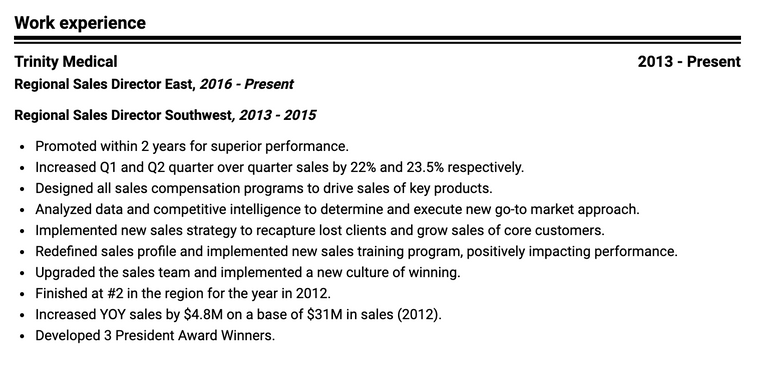
When to stack job titles together
Stack job titles when the jobs in question have identical or similar job descriptions. For example, you may have received a title change with no change in duties, been promoted to a job that increased your authority but didn’t change your day-to-day activities, or been transferred to a different branch office for the same role. In cases like this, describing both jobs would be repetitive.
Stacking job titles works best when you held the jobs one after the other. This way, the dates beside each role are still in order, even though they don’t have individual descriptions. If the jobs weren’t back-to-back—if you worked for a different company in between these jobs, for example—the timeline will be confusing. Only stack job titles when describing consecutive roles.
Suggested link: Cover letter examples
Further, it’s best not to stack job titles in your resume when you’re applying through an applicant tracking system (ATS). An ATS is a type of software that some employers use to read and sort resumes, and it’s important not to confuse it. When your job titles are stacked together, the ATS may have difficulty understanding which role the description applies to. If you are applying via an ATS, consider writing every job in a separate entry, even when they were at the same company.
In short, stack job titles together when:
- The jobs were consecutive
- The job descriptions were similar or the same
- You were promoted or moved for a good reason
- You aren’t submitting your resume to an ATS
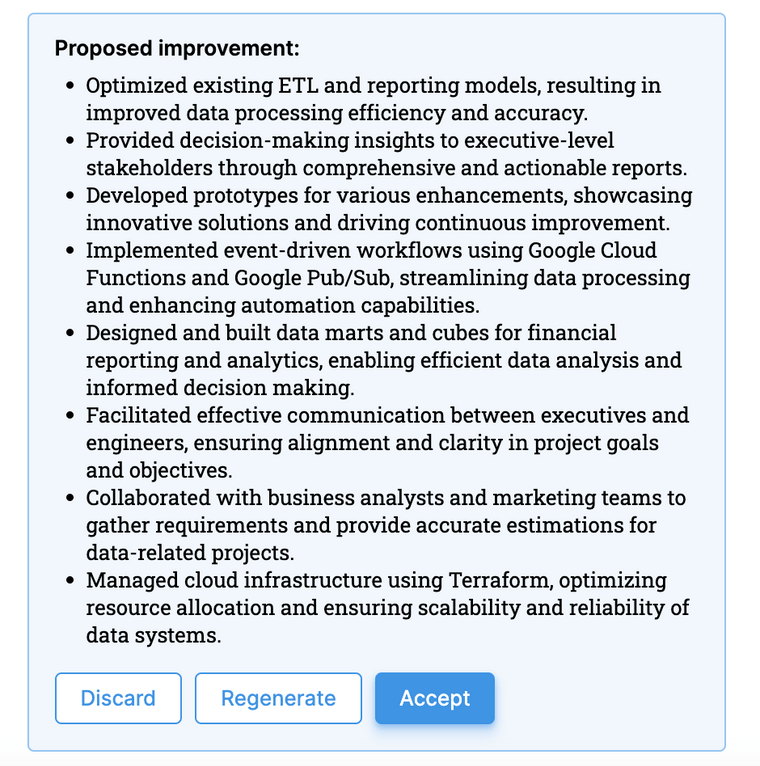
How to stack multiple positions at the same company
When stacking multiple roles together, add a single heading with the company title, followed by all of the associated job titles in reverse-chronological order. Beneath that, write bullet points describing the responsibilities that apply to all roles. This allows you to efficiently show that you have held different roles without repeating yourself in different job descriptions.
To stack multiple positions at the same company together:
- At the top of the entry, write the company name
- Below that, list the relevant job titles and their dates in reverse-chronological order
- Write a job description that applies to all roles
To make sure your promotion or department change is clear, include a brief explanation in the job description. For example, the first bullet point or sentence in your job description could be:
- Promoted to Senior Manager within 2 years after successfully leading two large projects.
- Transferred to a new branch office to introduce new management methodologies.
This way, any questions an employer could have about your move will be answered right away.
Template: Stacking multiple positions at the same company
Company Name Current Job | Start Date - End Date Previous Job |Start Date - End Date
- Accomplishment 1
- Accomplishment 2
- Accomplishment 3
Sample: Stacking multiple positions at the same company
Trinity Medical | 2013 - Present Vice President of Sales, 2016 - Present Regional Sales Director, 2013 - 2015
- Promoted within 2 years for superior performance.
- Increased Q1 quarter over quarter sales by 21%.
- Designed all sales compensation programs to drive sales of key products.
- Analyzed competitive intelligence to develop new go-to market approach.
- Implemented new sales strategy to recapture lost clients and grow sales of core customers.
- Reviewed sales profile and developed new sales training program.
- Managed the sales team and implemented a new culture of winning.
- Finished at #2 in the region for the year in 2014.
- Increased Year Over Year sales by $2.8M on a base of $29M in sales (2014).
- 2. Create separate entries for dissimilar consecutive roles
If you’ve been promoted or transferred to a role that had very different responsibilities, create separate entries for each role. Every position will need its own job description.
The entries can share the same company name heading, but the jobs themselves will need their own dedicated job description. It’s important that your resume reflects the distinct achievements and responsibilities in each position. To do this, create separate entries for each role.
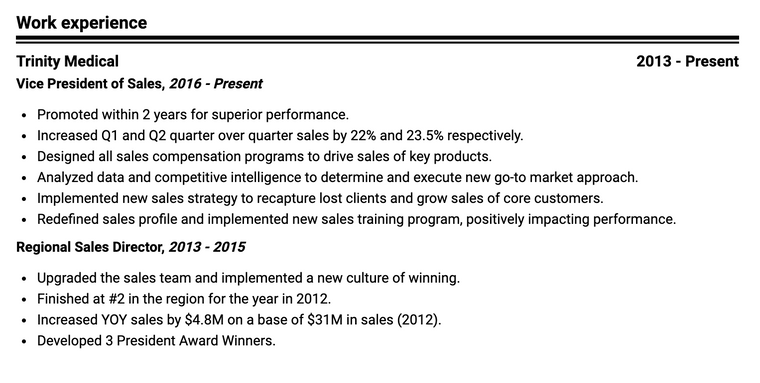
When to use separate entries to list multiple back-to-back positions at the same company
If you’ve been promoted or transferred and the new job is very different from the old one, you will need to write separate job descriptions for each one. A single job description can’t cover all the duties, unlike when you stack similar entries.
When you use separate entries you can choose to list the company name only once, right above the first job. Listing the company name once will save you a line, so it is a useful way to save space on your resume. Remember that if you only list the company name once, the jobs have to be sequential. If you worked for a different company in between jobs, both roles should give the company name.
Using separate entries is better than using stacked job titles when you’re applying through an ATS. Applicant tracking systems will find it easier to read your resume when each company name and job title is right above the relevant job description.
In short, use separate entries that share a single company heading when:
- The jobs you held at the one company had different duties
- The jobs you held at the same company were consecutive
- You are applying through an ATS
How to list back-to-back positions at the same company using separate entries
When you list multiple positions at the same company on a resume using separate entries, they will look similar to the roles in other companies. The only difference is when the jobs are all back-to-back you can omit the company name from the older roles.
Use a single heading for the name of the company, with a job title and bullet points for each position below it. Arrange the roles in reverse-chronological order, and in each job description focus on the distinct accomplishments you achieved in that role. This will show that you have been successful in different contexts at the company.
To list multiple positions at the same company in separate entries:
- Give the company name once
- Below that, list the previous jobs at that organization in reverse-chronological order, including dates and descriptions
If you were promoted, be sure to draw attention to the promotion in the description of the most recent position. Promotions show that the company appreciated your work and trusted you with greater responsibilities.
Template: Separate entries multiple positions same company
Company Name Current Job Title | Start Date - End Date
Previous Job Title | Start Date - End Date
Sample: Separate entries multiple positions same company
Trinity Medical Vice President of Sales, 2016 - Present
- Increased Q1 and Q2 quarter over quarter sales by 22% and 23.5% respectively.
- Analyzed data and competitive intelligence to determine and execute new go-to market approach.
- Redefined sales profile and implemented new sales training program, positively impacting performance.
Regional Sales Director, 2013 - 2015
- Upgraded the sales team and implemented a new culture of winning.
- Finished at #2 in the region for the year in 2012.
- Increased YOY sales by $4.8M on a base of $31M in sales (2012).
- Developed 3 President Award Winners.
- 3. List the same company twice
No one’s career path is a straight line. Many people, especially those who work in the same industry for most or all of their career, will one day find themselves back at a company that they had left years before. If this is the case for you, your best bet is to simply list the two roles separately in your work history as though they were any other job, giving the name of the company each time.
When to list multiple jobs at the same company in separate entries non-consecutively
The only time it will be necessary to list the same company more than once non-consecutively is, appropriately, when you have held jobs with the same company more than once non-consecutively. If you work for one company, leave it for a different company, then return to the original company, you should list the jobs in the order they occurred.
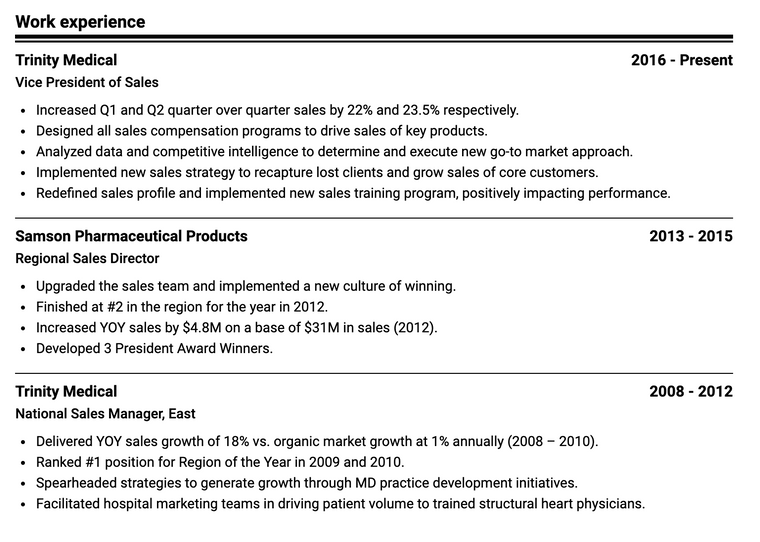
How to list multiple jobs at the same company on your resume when they weren’t back-to-back
To list multiple jobs at the same company on your resume when they weren’t back-to-back, simply list them in the order they happened. Include the company title and job title in all instances. Items in your Work Experience section should be listed in reverse-chronological order, so the jobs will fit in alongside all the others.
In the most recent role, you can write a bullet point explaining why you returned to an old company. This is a good opportunity to highlight the skills or expertise that the company wants you for. If you were so good that they wanted you back, you should make a point of saying so!
Template: listing multiple jobs at the same company that aren’t back-to-back
Current Company Current Position | Start Date - End Date
Previous Company Previous Position | Start Date - End Date
Current Company Previous Position | Start Date - End Date
Sample: listing multiple jobs at the same company that aren’t back-to-back
- Increased Q2 quarter over quarter sales by 23.5% in 2017.
- Designed all sales compensation programs to drive sales of flagship product.
- Analyzed data and competitive intelligence to determine and execute new market approaches.
- Developed plan to recapture lost clients and grow sales to returning customers.
- Implemented new sales training program, improving performance.
Samson Pharmaceutical Products Regional Sales Director, 2013 - 2015
- Implemented a new culture of winning throughout sales team.
- Finished at #3 in the region for the year in 2014.
- Improved YOY sales by $4.8M on a base of $27M in sales (2014).
- Developed 2 President Award Winners.
Trinity Medical National Sales Director, East, 2008 - 2012
- Delivered YOY sales growth of 18% vs. organic market growth at 1% annually (2008 – 2010).
- Ranked #1 position for Region of the Year in 2009 and 2010.
- Spearheaded strategies to generate growth through MD practice development initiatives.
- Facilitated hospital marketing teams in driving patient volume to trained structural heart physicians.
- 4. List older jobs in a separate section
If you worked at the same company for several years, receiving promotions and working your way up the company ladder, you can show this by creating a distinct section on your resume for that company alone. The rest of your experience in other jobs will be in its own section.

When to use a separate section for multiple positions at the same company
Using a separate section for one company with many positions is best for older professionals with decades of experience, with work experience from a company that dates back several years. There should be enough roles at the former company to justify a distinct section.
This method can also be useful for people who have changed careers. Using a separate section for past jobs that aren’t as relevant to your current vocation is a good way to save space on your resume and tell your career story.
Ideally, all of your positions at a past company can be listed in reverse-chronological order. This means that you held them all in sequence, with no roles at any other company. If not, you may want to consider writing a functional resume , which can help you list past roles out of order (although most employers prefer reverse-chronological resumes).
How to use a separate section to list multiple positions at the same company.
To list all positions at one company in a distinct resume section, create two different sections for your Work History: one with all your jobs at a particular company, and one with the rest of your experience.
To do this, create a section separate from the rest of your work history. You can title the section with the name of the company, or give it a heading like “Previous Experience.” Then, within the section, list all of your job titles at that company in reverse-chronological order.
You can add descriptions to each job if necessary, but if these roles are from years ago and you have more current roles to highlight, you can leave those out. This efficiently showcases all of your previous roles and tells a clear story of how you worked your way through the company, while leaving room on your resume for more important details when you describe more recent positions.
In short, to list multiple roles at a company in a separate section:
- Create a section for your roles at one specific company
- List all your positions at that company in reverse-chronological order
- Create a different section for other work experience
- List your other positions in this section
Template: Listing multiple positions at the same company in a separate section
Prior Professional Experience Company Name Job Title | Start Date - End Date Job Title | Start Date - End Date Job Title | Start Date - End Date
Sample: Displaying multiple positions at the same company in a separate section
Trinity Medical Vice President of Sales, 2003 - 2005 National Sales Manager, 2000 - 2002 Regional Sales Director Southwest, 1997 - 2000
- Sample resume: multiple positions, same company
The way you format your resume depends on the way your career journey unfolds. Were you promoted to a new position? Headhunted by a previous company to come back for a management role? Did you work your way up the company ladder? Were you moved to a struggling branch because of your success at a previous branch? Whichever it is, make sure you list your multiple positions at the same company in a way that shows you to be the great employee you are.
If you need some inspiration to get started, this sample resume could help:
Public relations officer resume sample
Enthusiastic public relations officer who has a passion for working in a fast-paced environment. Highly skilled in persuasive communication and relationship management. Strong understanding of organizational boundaries. My previous experience in public relations includes analysis, team coordination, planning, and operational and administrative functions. Skilled team builder with demonstrated success in improving the image of institutions.
WORK EXPERIENCE
OGILVY & MCCANN Senior Public Relations Officer, 2020 - PRESENT
- Plan publicity strategies and campaigns, including PR outreach, social media campaigns, and articles.
- Train and manage interns.
- Supervise social media output.
- Represent clients at industry events.
- Write and produce presentations and press releases.
- Create, curate, and manage published content.
- Create reports for management showing ROI.
Public Relations Officer, 2015 - 2019
- Planning publicity strategies and campaigns.
- PR campaigns/social media campaigns/writing articles and designing visual graphics.
- Managing and training interns.
- Manage social media account.
- Compile reports for management showing results.
- Create strategic messaging on social media to grow our community.
- Working together with the Independent media group social media and audience development delegate to draw up and implement strategies to tap into potential markets and possible sale opportunities.
- Designing social media strategies to achieve marketing targets.
- Managing, creating and publishing original, high quality content on social platforms.
- Administering all company social media accounts to ensure up-to-date content.
Content Marketing Specialist, 2011 - 2015
- Created and curated engaging content.
- Communicated and build relationships with current or prospect clients.
- Created and distributed press releases.
- Built and updated media lists and databases.
- Scheduled, coordinated and attended various events.
- Performed research and market analysis activities.
- Written and produced presentations and press releases.
- Tracked social media performance and content coverage for clients.
POWERTRAIN Industries, 2009 - 2011 Public Relations intern
- Processed of all types of applications and paperwork.
- Assisted in office administrative duties.
- Performed research and market analysis.
- Tracked social media performance and content coverage .
YALE UNIVERSITY BA in Economics
- COMMUNICATION
- DIGITAL STRATEGIST
- PROBLEM-SOLVING SKILLS
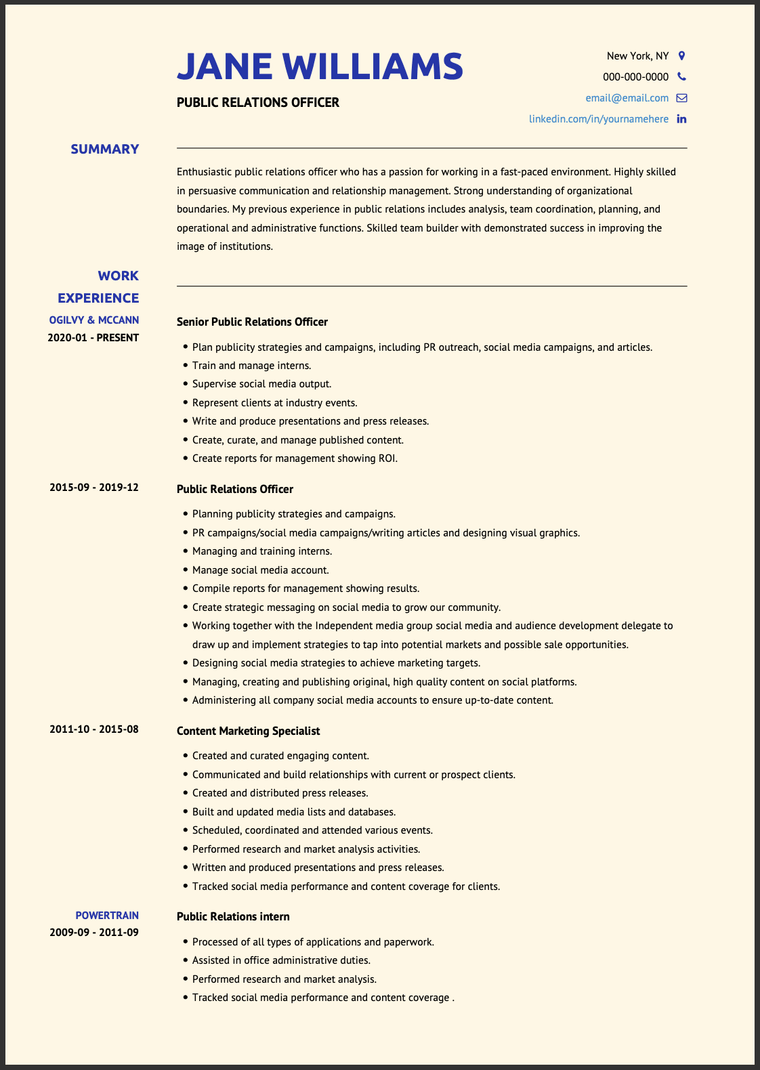
- Should you list multiple positions on your resume for the same company?
Displaying multiple positions on your resume for the same company shows a hiring manager that you are reliable and in it for the long haul. It adds weight to your job application and helps your resume stand out.
- How do you put multiple positions at the same company on a resume?
Here are 4 ways to list multiple positions at the same company on your resume:
- Stack similar job titles together
- Create separate entries for dissimilar consecutive roles
- List the same company twice
- List older jobs in a separate section
Community Success Manager & CV Writing Expert
Ben is a writer, customer success manager and CV writing expert with over 5 years of experience helping job-seekers create their best careers. He believes in the importance of a great resume summary and the power of coffee.

Read our free guide to the best action words to use on your resume.
November 23, 2021

Co-Founder & Director
![resume template multiple jobs one company The 2023 Resume Writing Guide [+ Job Search Tips and Resume Examples]](https://www.visualcv.com/static/0a451b7c20b67c3a0ce6a7b4a7680f5f/61ca5/Resume_Guide.jpg)
Our 2023 Free Resume Writing Guide is filled with quality job search tips, resume examples and information you need to know before writing your resume or CV.
January 30, 2023

VP Marketing & Resume Expert
Learn how your resume can beat the applicant tracking system (ATS) with keywords and the right resume template.
February 7, 2022
Copyright © 2024 Workstory Inc.
Select Your Language:
How to List Multiple Positions at the Same Company on Your Resume (the Easy Way)

3 key takeaways
- The best way to list multiple positions at one company on a resume
- Common mistakes to avoid on your resume when listing multiple positions at one company
- How Teal’s AI Resume Builder can help you pull together a well-formatted and tailored resume without confusion or frustration
Formatting a resume can be time-consuming. There’s seemingly endless grappling with bullet points, margins, and text that keeps bouncing around to random places.
It can be a frustrating process, but when you need to list multiple positions at the same company, resumes can become even more difficult to format and organize.
Do you need to list the company details with every single role? What order should you put them in? How do you deal with showing the dates you worked for the company and the dates you were in each specific job?
When you’re working on your resume, multiple positions at the same company might seem like a puzzle. But displaying these in a way that makes sense is surprisingly straightforward once you know the best approach.
That’s where this guide comes in. We’ll show you how to showcase those different jobs in a way that makes sense (and doesn’t waste precious space on your resume).
Why it’s important to list multiple positions at the same company correctly
The content of your resume is important, but presentation matters too. A recruiter or hiring manager won’t be impressed by your experience and accomplishments if they can’t make sense of them in the first place.
But that’s only one of the reasons why it’s important to figure out how to list multiple jobs at one company on your resume. Here are some other benefits:
- Showcase your versatility and career progression: Potential employers want to hire candidates who can make a meaningful impact at the organization not only today but tomorrow (and several years into the future, too). That’s why it can be helpful for them to see that you’ve already grown professionally and moved up through different roles with a previous company. Plus, it demonstrates that you have a growth mindset—a trait that more employers are looking for.
- Quickly impress employers: Conventional advice tells you that recruiters don't have significant time to review your resume on the first pass before deciding how to move forward. A document that’s organized and thoughtfully formatted helps them immediately understand your skills and career history, even if they only give it a quick skim.
- Avoid confusion: A resume with multiple jobs at the same company can be confusing if you aren’t careful about how you list those positions. Recruiters might not be able to tell which company a job is attached to. Understanding how to display this information correctly makes it easier to read your resume and gets your career story across without confusion and misunderstandings.
- Save space: If you’ve ever tried desperately to shrink your margins or font size to get everything to fit on one or two pages, you know that space is at a premium on your resume. Understanding how to display multiple positions at one employer effectively will help you cut down on unnecessary details and bloat so you can dedicate more space to your other impressive and relevant achievements.
How to list multiple positions at the same company
Okay, you don’t need any more convincing—you know you need to get this aspect right. That leads to the biggest question: how do you list multiple job titles on your resume, particularly when several of them are with the same company?
How you approach this will depend on your unique experience and what information you have to showcase. But in general, listing several roles with one employer will work like this:
- List the company name, location, and total date range (month and year) you worked at that company as a single heading
- Underneath the company details, list each position you worked in reverse chronological order (meaning, start with the most recent job title at the top) as separate entries
- Next to each position, list the dates (month and year) you worked in that specific role
- Underneath each role, bullet out your different duties and accomplishments
That’s the gist, but it makes a lot more sense when you look at an example. Here’s what this could look like:
Vance Refrigeration | Scranton, PA | October 2019 - November 2023 Sales Manager | August 2022 - November 2023
- Bullet point with impact
Senior Sales Representative | April 2020 - August 2022
Sales Representative | October 2019 - April 2020
Pretty simple, right? Teal’s AI Resume Builder can make this process even easier with the option to show all of your dates by company, position, or both.

If you have a fairly straightforward career history, then listing several roles with one employer isn’t all that complex. However, things get a little trickier when your circumstances are more unique.
Let’s take a look at three other common employment scenarios and how those impact how you should display your roles.
How to list promotions on your resume
When it comes to figuring out how to show promotions on your resume , the exact approach you take will depend on your circumstances.
In general, you want to stick with reverse chronological order—putting your most recent positions at the top and working backward from there. That makes the most sense for promotions.
And if a promotion isn’t obvious based on resume job titles alone, remember that it can be helpful to use a single bullet to explicitly mention that you were bumped up in the company as a result of your skills and contributions.
Sabre | Scranton, PA | October 2019 - November 2023 Human Resources Specialist | April 2022 - November 2023
- Promoted to this role as a result of demonstrated leadership, organization, and interpersonal skills.
- Achievement with impact
Human Resources Coordinator | March 2021 - April 2022
What to do when you return to a company after a break
Maybe you worked at the same company for a year or two, left for a role with a different company, and then returned to the original company in a new role. How do you show that in a way that makes sense?
In cases where you have a break from an employer, it’s best to group your experiences together (but make sure the dates are very clear).
If you think it’s necessary, you could also use one bullet point to explain why you decided to “boomerang” back to that previous employer, but you certainly don’t have to.
Dunder Mifflin Paper Company | Scranton, PA | September 2021 - November 2023 Regional Manager
Dunder Mifflin Paper Company | Scranton, PA | May 2017 - October 2020
Branch Manager
Michael Scott Paper Company | Scranton, PA | October 2020 - September 2021
How to list a promotion to a role with similar duties
Promotions are often rewarding, but they don’t always come with a major change to your job responsibilities. Sometimes, your title changes, but your day-to-day activities stay mostly the same.
In those cases, you can stack the job titles by listing your two job titles at the same time together and then dedicating one set of bullet points to both of those positions. Here’s how that looks:
Shrute Farms, Inc. | Honesdale, PA | October 2019 - November 2023 Financial Analyst II | December 2022 - November 2023
Financial Analyst I | October 2021 - December 2022
Common mistakes to avoid when showing multiple positions at the same company
At this point, hopefully, you feel more confident about how to add two positions in the same company on your resume. But there are a few more common mistakes you’ll want to keep an eye out for when you’re listing multiple jobs.
1. Forgetting to update your verb tense
If you have a current position, your bullet points should use action verbs in the present tense (for example, “oversee” and “manage”). Any previous jobs should use past tense (like “oversaw” and “managed”).
It’s a seemingly small and inconsequential change, but it makes a big difference when it comes to clarity—especially when you have a resume with the same job and different dates.
2. Mixing up the order of your positions
If you’re using a chronological resume format , which is the most commonly used approach, then remember that all of your positions should be in reverse chronological order. That means your most recent role is toward the top, and you move backward from there.
With Teal’s AI Resume Builder , you can manually rearrange all of your positions by clicking and dragging them in place. But if you want to keep things simple, just click the toggle for “sort by date,” and it will put all of your roles in the right order for you.
3. Neglecting to quantify your bullet points
Consider this resume golden rule: You want to quantify your contributions whenever you can. That means including real numbers and results to highlight your achievements.
For example:
- Instead of “developed and executed a sales strategy”
- Use “developed and executed a sales strategy that increased revenue by 25% in one year”
Talking about yourself can be hard, which makes this a sticking point for a lot of people.
With Teal’s AI Resume Builder , you’ll find tons of features to help you amp up your duties and impressive accomplishments, including helpful tips, examples, prompts, templates, and even an AI assistant that will help you generate bullets.
4. Overlooking recency and relevance
It can be tough to prioritize information on your resume. Ultimately, your goal is to show that you’re a fit for the specific role you’re applying for by highlighting your most relevant positions and achievements.
However, recency carries some weight, too. You don’t want a lengthy description for one of your older jobs you held 15 years ago, but then only two bullet points for your most recent position.
In general, recent jobs should have more detail and bullet points (somewhere around three to five), while older roles should have fewer bullet points (around one to three) as long as they're all relevant and maintain a specific job description focus.
Tailoring your resume for each job application
When you’ve nailed the formatting of your resume, the last thing you want to do is reinvent the wheel every single time you apply for a new job. With that in mind, most job seekers ask: Should you tailor your resume for every job? Do you really have to do this?
Here’s the short answer: yes. It’s important to tailor your resume for each job application.
Remember, the best way to stand out in your job search is to present yourself as the best, most qualified match for the role you’re applying for. That’s impossible to do if you use the same copy-and-paste resume for every single position.
So, what does it mean to tailor your resume?
- Carefully review the relevant job description for keywords and skills to incorporate into your resume. Teal’s Job Application Tracker will automatically highlight the hard and soft skills in a job description so you can see what words to include.

- Place your most relevant skills front and center so they aren’t missed.
- Use more detail when describing your most relevant jobs and achievements in your bullets.
Teal’s AI Resume Builder can also help you compare the skills and keywords from a job description to your resume with a Match Score so you can make sure your resume shows that you’re a no-brainer match. Plus, you can easily create and save different versions of your resume to streamline your customization process over time.

How to write an incoming job on your resume
Most commonly, resumes are used for the job search. But, there are other instances when you might need to share a resume—like if you’re submitting yourself for an award or credential.
In those cases, you might wonder: Can you put a job you haven’t started yet on your resume?
Absolutely, as long as you clarify that you haven’t started that new position quite yet (after all, lying on a resume is always bad). The easiest way to do this is with the dates you use next to the position.
Rather than simply listing the month and year, you’ll say something like, “Expected Start Date: February 2024.” That makes it clear you have an upcoming role but that it’s not in full swing quite yet. Here’s an example:
Athlead | Austin, TX Human Resources Specialist | Expected Start Date: February 2024
When it comes to the actual bullet points, you won’t have any quantifiable achievements or results to share yet since you haven’t even started. You can either dedicate a few bullet points to explaining your upcoming responsibilities (especially if they’re relevant to the opportunity you’re applying for) or simply skip the bullets altogether.
If you want to learn more about the nuances here, find out more about how to write an incoming job on your resume .
Format your resume with less stress and more success
Having multiple positions within the same company on a resume is a positive thing. It demonstrates loyalty, versatility, professional development, and career progression—as long as you know how to correctly list that information on your resume.
Fortunately, formatting isn’t as complicated as you might think when you've held multiple positions. Use this guide as you work on your resume, and you’ll draw attention to that previous experience in a way that makes you even more impressive to hiring managers.
Teal’s AI Resume Builder can help you create a standout resume without all of the headaches. Try it for free today.
Frequently Asked Questions
How should i format my resume if i've been promoted within the same company, can i combine the experience from multiple roles at the same company into one section on my resume, how do i handle overlapping job titles when i've held two positions at the same time within the same company.

Kat Boogaard
Related articles.

Should You Include Pronouns on a Resume?

How to List Professional Affiliations on a Resume [+ Examples]

TopResume Review: Cost & Customer Feedback

Motivation Letter: What It Is & How to Write One [+ Samples]

We help you find the career dream.
Explore Jobs
- Jobs Near Me
- Remote Jobs
- Full Time Jobs
- Part Time Jobs
- Entry Level Jobs
- Work From Home Jobs
Find Specific Jobs
- $15 Per Hour Jobs
- $20 Per Hour Jobs
- Hiring Immediately Jobs
- High School Jobs
- H1b Visa Jobs
Explore Careers
- Business And Financial
- Architecture And Engineering
- Computer And Mathematical
Explore Professions
- What They Do
- Certifications
- Demographics
Best Companies
- Health Care
- Fortune 500
Explore Companies
- CEO And Executies
- Resume Builder
- Career Advice
- Explore Majors
- Questions And Answers
- Interview Questions
Show Multiple Positions At The Same Company On A Resume
- Resume Templates
- General Resume Examples
- Resume Format
- Resume Margins
- Resume Header
- Work Experience On Resume
- Irrelevant Work Experience
- Listing Languages On Resume
- Volunteer Work On Resume
- GPA On Resume
- Resume Title
- Summary Of Qualifications
- Resume Picture
- Python Project On Resume
- Google Docs Resume Template
- Professional Bio On Resume
- Multiple Positions At Same Company
- Relevant Coursework Resume
- Where And How To Put Internships On Your Resume
- Professional Resume Formats
Summary. To show multiple positions that you have held while at the same company, you can either stack your entries, split them, put them in the prior experience section, or put them in the reverse-chronological format. If you have been at the company for a while and have moved up pretty far, you may not need to include as many entry-level positions.
Working in multiple positions at the same company can be great for your career, but it’s difficult to put on a resume.
In this article, we’ll give you several methods for putting multiple positions at the same company on your resume so you can choose the one that works best for you.
Key Takeaways
The method you use to show multiple positions at one company on your resume will depend on how similar the roles were to each other and when you held each one.
You may not need to include as much about your entry-level position at the company as you do your current role, depending on how far up you’ve moved.
Try to keep your resume entries in reverse chronological order as much as possible.

Option One: Stack Your Entries
Option two: split your entries, option three: prior experience section, option four: worked for the same company at different times, how to show multiple positions at the same company faq, final thoughts.
- Sign Up For More Advice and Jobs
The first option we’ll cover is the most intuitive and works well if you had very similar responsibilities in each position. For example, if you were a Sales Representative and got promoted to Sales Coordinator .
In this case, stacking the job titles under one company header is a good option. Here’s what that would look like:
Toast Inc., Boston, MA | March 2016-Present Sales Coordinator | May 2018-Present Sales Representative | March 2016-May 2018 Bullet 1 Bullet 2 Bullet 3
As with any resume , start by stating the company name, location, and dates worked at the company. You should list your total time at the company next to the company name, and then put the date range for each position beside the job title. Always list your experience within a company (and for your whole resume) in reverse-chronological order , starting with your most recent experience.
For each bullet, use your most significant accomplishments from the higher position first. However, if you have achievements from your earlier title you want to show off, definitely add those as well.
It’s also a good idea to include your promotion and the reason for it in one of the bullets.
For example: “Promoted for outstanding client relations and demonstrated leadership ability .” That way, your promotion doesn’t get lost in the cards, and the hiring manager can clearly see how you added enough value to your former employer to earn a bump in responsibility.
Now, if you worked three or more jobs at the same company, stacking your entry can start to take up valuable real estate on your resume. It’s likely that your accomplishments at earlier positions won’t matter as much in this case, so you can put all of these job titles together, like so:
Toast Inc., Boston, MA | March 2016-Present Sales Coordinator | May 2018-Present Sales Representative | March 2016-May 2018 Earlier Positions: Intern, Data Entry Clerk, Office Assistant | January 2014-March 2016 Bullet 1 Bullet 2 Bullet 3
In the above example, your bullets should only focus on relevant job duties, so you don’t have to describe your achievements from those earlier positions. They’re there to show how long you worked for the same company and how many different responsibilities the company’s entrusted you with. The hiring manager doesn’t need to know how awesome you were at making coffee as an intern if you’re applying for a different sales role.
While stacking your job titles like this is intuitive and looks clean to human eyes, applicant tracking systems (ATS) may only parse a single job title per company name. When calculating your years of experience, it may only take the dates from the more recent position. So in the above example, the ATS would only see that the applicant two years of sales experience instead of four.
If you are applying to a large company, they will likely use an ATS to screen resumes. Do not stack entries when applying to large companies. However, if you send your resume directly to a human reader , this format works really well.
If you’ve held multiple jobs at the same company, but the responsibilities of each were very different, it may be a better idea to split your entries.
For example, if you started out as a data analyst and moved into a marketing position, you would list it like so:
edX, Cambridge, MA | June 2017-Present Marketing Coordinator | May 2019-Present Bullet 1 Bullet 2 Bullet 3
Data Analyst | June 2017-May 2019 Bullet 1 Bullet 2 Bullet 3
You can still save space by including each job title under the umbrella of one company entry. As always, list your most critical, quantifiable achievements for each job title. If your change in positions was a promotion rather than a lateral move, clarify by stating something like “promoted within the company because of demonstrated talent in applying data analysis to marketing tactics.”
Always start with the most recent position. As you work your way back, you can include fewer and fewer bullet points, especially if earlier roles aren’t as relevant to the job you’re applying for.
Be warned: companies are wary of hiring job-hoppers, so ensure that it’s abundantly clear that you were shifting roles within one organization. The easiest ways to do this are putting the total date range at the top (next to the company name and location) and stating you were promoted early on in your bullet points for the most recent position (and any position you were promoted to prior).
Applicant tracking systems can parse your job titles easier if you split them instead of stack them. However, if you really want to make sure that every ATS will pick up your job titles and assign you an accurate “years of experience,” you may opt to split your entries more by listing the company name each time.
Here’s what that would look like:
edX, Cambridge, MA Marketing Coordinator | May 2019-Present Bullet 1 Bullet 2 Bullet 3
edX, Cambridge, MA | June 2017-May 2019 Data Analyst Bullet 1 Bullet 2 Bullet 3
The above two options work fine if you have a relatively short history with a company and only held a few different positions. However, for someone who has a long career with multiple job title changes within the same organization, it may be more concise and straightforward to create a separate resume section altogether for “prior experience.”
Starbucks, Seattle, Washington | May 2003-Present President of Sales | June 2013-Present Bullet 1 Bullet 2 Bullet 3
Vice President of Sales | May 2007-June 2013 Bullet 1 Bullet 2 Bullet 3
Prior Professional Experience Starbucks, Seattle Washington Sales Manager | September 2005-May 2007 Sales Coordinator | September 2004-September 2005 Sales Representative | May 2003-September 2004
Formatting your resume this way saves a lot of space and focuses on your most important roles and responsibilities. It also allows the hiring manager to see how long you’ve worked for the same company without overloading them with irrelevant information about your former roles. Clearly, you did well enough to become president , so who cares what you did back in your days as a sales rep?
ATS may not differentiate between experience and prior experience sections, but they will pick up the dates and assign you the correct amount of experience for each position.
While less common than the above examples, there may be a situation where you left a company and then returned after working somewhere else. In this case, formatting your resume’s work experience section is intuitive; just go with the reverse-chronological format, and you’ll be fine. Here’s what that looks like:
Toast Inc., Boston, MA | March 2019-Present Sales Manager Bullet 1 Bullet 2 Bullet 3
edX, Cambridge, MA | June 2017-March 2019 Sales Coordinator Bullet 1 Bullet 2 Bullet 3
Toast Inc., Boston, MA | March 2016-June 2017 Sales Representative Bullet 1 Bullet 2 Bullet 3
Obviously, this option only applies if there’s a gap in your employment at a particular company. An ATS will have no problem parsing the information in a resume formatted like this because it’s the standard resume format.
How do I list two positions at the same time with two employers on my resume?
You list two positions at the same time with two employers on your resume by creating a different entry for each job and putting the correct dates on them. This will result in two job entries for the same period of time, and it will show hiring managers your different responsibilities in each one.
If you’re arranging your work experience in reverse chronological order, put the job that you started most recently at the top of the page and then add the other job after that.
How do I show progression on my resume at the same company?
You show progression on your resume at the same company by listing each role you had at the company on your resume.
You can do this in several ways, depending on how much work experience you have: You can list each position as a separate job entry, complete with a list of all its responsibilities, or you can put roles you had 15 or more years ago in a “Prior Experience” section.
Should I list multiple positions at the same company on my resume?
Yes, you should list if you held multiple positions at the same company. This is important if they had different responsibilities or were in different departments. To list them on your resume, you should consider stacking your entries, splitting them, or put them in the prior experience section of your resume.
The work experience section of your resume is by far the most crucial aspect to get right. Ensure hiring managers (and ATS) can understand your professional history by implementing the options listed above, as appropriate.
Ultimately, you want your resume to tell a story about how you’ve developed as a professional, the value you’ve added in each of your prior positions, and the continuing upward trajectory of your career. By drawing a hiring manager’s attention to your promotions and job title changes within a company, you’re showcasing all the different responsibilities you’ve been entrusted with, upping your chances of receiving a job offer .
Harvard Office of Career Services – 23 Resume Tips for 2023
How useful was this post?
Click on a star to rate it!
Average rating / 5. Vote count:
No votes so far! Be the first to rate this post.

Matthew Zane is the lead editor of Zippia's How To Get A Job Guides. He is a teacher, writer, and world-traveler that wants to help people at every stage of the career life cycle. He completed his masters in American Literature from Trinity College Dublin and BA in English from the University of Connecticut.
Don Pippin is an executive and HR leader for Fortune 50 and 500 companies and startups. In 2008, Don launched area|Talent with a focus on helping clients identify their brand. As a Certified Professional Resume Writer, Certified Digital Career Strategist, and Certified Personal Branding Strategist, Don guides clients through career transitions.

Related posts

Should I Put My Address On My Resume?

How To List Language Levels On Your Resume (With Examples)

Relevant Experience: What Does It Mean On A Resume?

How To Make A Video Resume
- Career Advice >
- Resume Structure >
- Resume Format >
- Resume Multiple Positions Same Company
- Resume Templates Simple Professional Modern Creative View all
- Resume Examples Nurse Student Internship Teacher Accountant View all
- Resume Builder
- Cover Letter Templates Simple Professional Modern Creative View all
- Cover Letter Examples Nursing Administrative Assistant Internship Graduate Teacher View all
- Cover Letter Builder
- Resume Help
How to display multiple positions for the same company on a resume
1. Is it necessary to list multiple roles with the same employer on my resume?
2. how can i showcase promotions within the same company on my resume , 3. what if my jobs with the same employer were interrupted when i left to work somewhere else, 4. what if i want to show a series of promotions with the same employer many years ago.
There is hardly anything more impressive for a hiring manager than seeing on your resume how valuable you were to previous employers. If you have a track record of progressive job moves (both sideways and promotions) within the same organization, it is not hard to imagine you doing the same in the future. Most ambitious professionals want to be promoted and take on greater responsibilities — they do not have to move companies to make it happen.
But how do you showcase having had multiple positions for the same company on your resume? In this blog, we’ll explore:
- Do you group the job titles together?
- Do you list each position in a separate section?
- How do you indicate your time worked in each position?
- How do you draw attention to promotions?
- What if your roles in the same company were not consecutive — i.e., you left and were rehired later after working for another employer in between?
Getting this right can mark you as “one to watch” in the job search. People change jobs a lot more frequently these days, so staying to deliver and grow in one company is laudable.
Displaying multiple positions with the same company
It is important to ensure that all your previous job titles and corresponding dates are listed appear on your resume to tell a complimentary story of your employment history. There are four possible ways to display more than one position with the same employer, depending on the circumstances.
Let’s consider the reasons for each approach to ensure your accomplishments are conveyed to the best advantage.
1. Group the job titles for similar roles together
If the positions were similar to one another — promotions or lateral moves within the same department — it might make the most sense to stack the job titles above each other with corresponding dates held. You can then detail your achievements across both roles collectively.
Emphasize your most senior responsibilities, focusing on the more senior role appearing first. If you were promoted to that position, draw attention to it in the first line. Your contributions in the minor role will be less impressive, so only describe those that illustrate growth and development.
Promote yourself! Internal promotions are one of the most impressive aspects of any resume. Obviously, your work was appreciated enough for you to be trusted with greater responsibilities. Just the word “promotion" will make a future employer’s eyes widen and they will hope that you follow that path with them.
An easy way to highlight promotions: Indicate it in the top bullet point describing your most recent position.
The following adaptable example shows how to stack job titles encompassing common areas of responsibility.
Mackin Stores, San Diego
Warehouse Manager (January 2019 — Present)
Warehouse Assistant (March 2017 — December 2018)
- Promoted within 20 months to lead a team of 15 warehouse staff, fostering a culture of efficiency, safety, and teamwork that saw a 15% increase in productivity over two years.
- Spearheaded the implementation of safety protocols, resulting in a 30% decrease in workplace accidents over the course of two years.
- Collaborated in a significant restructuring of storage space, resulting in a 10% increase in warehouse capacity and improved organization.
Below is a template for stacking job titles for similar roles with the same employer.
Employer Name, Location Current Job (Start month year — End month year) Previous Job (Start month year — End month year)
- Accomplishment 1
- Accomplishment 2
- Accomplishment 3
2. Highlight your work experience for each position separately
When you’ve been promoted, or moved laterally, to a different department in the same organization, or the positions you've held are otherwise quite different from each other, it’s advisable to separate them. This is a visually impactful way to demonstrate that you have been successful in different roles with the same employer.If you wish to highlight different experiences from the roles, then it is advisable to separate them.
Again below a single heading for the employer name and location, list each job title separately, with the corresponding work experience in reverse chronological order. Arrange the roles in reverse chronological order, and in each job description focus on what you contributed. The more relevant a specific role is to the job you are seeking, the more extensively you highlight those accomplishments
Using separate entries is better than using stacked job titles when you’re applying through an applicant tracking system (ATS). These digital screening systems will find it easier to read your resume when each company name and job title is right above the relevant job description.
The following example shows how to list accomplishments separately for dissimilar consecutive roles in the same company.
Procurement Manager (June 2021 — Present)
- Promoted to develop and execute a comprehensive procurement strategy, aligning inventory levels with demand forecasts, resulting in a 20% improvement in supply chain efficiency.
- Identified cost-saving opportunities by sourcing alternative suppliers, leading to a 12% decrease in procurement expenses without compromising product quality.
- Manage a procurement budget of $2 million annually, consistently staying within or below budget while meeting all operational needs.
- Establish and maintain strong relationships with key suppliers, negotiating favorable terms and conditions that reduced procurement costs by 15% within three years.
Office Manager (March 2018 — May 2021)
- Maintained accurate and organized records of all warehouse-related documents, including invoices, purchase orders, shipping manifests, and employee records.
- Collaborated with the warehouse team to ensure proper documentation and tracking of inventory levels, including reconciling physical counts with digital records.
- Interacted with vendors and suppliers to coordinate deliveries, address billing inquiries, and maintain positive relationships.
Below is a template for outlining your work experience under separate job titles for the same employer
Employer Name, Location Current Job (Start month year — End month year)
Previous Job (Start month year — End month year)
3. List the same company twice for non-consecutive roles
It’s not unusual, particularly at a later career stage, to be rehired by a previous employer after leaving to work elsewhere for any length of time. In that instance, simply list those positions with corresponding dates and bullet points separately — below the same company name each time. Organize them wherever they fit (reverse) chronologically in your resume’s employment history section. In other words, you treat these non-consecutive jobs with the same employer as you would any other jobs for different employers.
In the most recent of two non-consecutive positions with the same company, you might want to indicate in the top bullet point why you returned. Use this opportunity to showcase expertise that motivated your previous employer to rehire you.
Below is an example of how to list accomplishments separately for different non-consecutive jobs with the same employer.
Procurement Manager (August 2022— Present)
- Rehired to develop and execute a comprehensive procurement strategy, aligning inventory levels with demand forecasts, resulting in a 20% improvement in supply chain efficiency.
Gemini Wholesale, San Diego
Quality Assurance Officer (June 2018— July 2022)
- Implemented stringent quality control measures for incoming goods, reducing defective products by 12% and enhancing overall product quality.
- Streamlined procurement processes by introducing digital tools and automation, reducing order processing times by 20% and minimizing errors.
- Ensured adherence to all relevant regulations and industry standards, maintaining a compliant and transparent procurement process.
Office Manager (March 2016 — May 2018)
Below is a template for Template: listing multiple jobs at the same company that aren’t back-to-back. Current Employer Name, Location
Current Job (Start month year — End month year)
Previous Company Employer Name, Location
Current Current Employer Name, Location
4. List older jobs with the same employer in a separate section
Professionals with many years of experience might want to display older consecutive jobs with the same employer in less detail, particularly if they are no longer as relevant. An efficient, space-saving way to highlight an early career story chapter is in a separate section of your resume’s employment history section. There should be enough roles with the same company to make it worthwhile
You can title this subsection with the employer name, perhaps under a subheading like “Previous Experience.” Then simply list all of your job titles at that company in reverse chronological order.
It shouldn’t be necessary to add bullet point descriptions for each unless relevant to your current employment goals. Omitting them leaves room for details of your more recent positions.
Your other, more recent and relevant work experience will be organized in the usual manner above this subsection.
Ideally, all of your positions with any previous employer should be listed in reverse chronological order, the resume format that employers prefer. If this isn’t possible, you may want to consider creating skills-based functional resume, or apply the hybrid (combination) format.
This example illustrates how to list older jobs with the same employer in a separate employment history section.
Trader Yours, San Diego
PREVIOUS EXPERIENCE
- Office Manager (October 2012 — May 2018)
- Warehouse Supervisor (May 2009 — September 2012)
- Warehouse Clerk (January 2007— April 2009)
Here’s a template for listing multiple older jobs with the same employer in a separate section.
Current Employer Name, Location
Previous Employer Name, Location
- Previous Job 3 (Start month year — End month year)
- Previous Job 2 (Start month year — End month year)
- Previous Job 1 (Start month year — End month year)
FAQs for displaying multiple positions for the same company
Probably yes. Let relevance guide your decision, making sure you never overlook any contributions and accomplishments that could help persuade hiring managers that you’re an excellent match to the target job application.
Indicate in the top bullet point the most recent role that you were promoted to a higher level of responsibility from your previous job with this employer.
Simply list and describe these jobs separately, naming the employer each time, in order of where they fit reverse chronologically with other jobs comprising your resume’s employment history section.
Create a separate section in your employment history to highlight this early career chapter, simply by listing the job titles with corresponding dates below the employer name and/or a subtitle “Previous Experience.” Descriptive bullet points for older jobs are usually not necessary.

Many people struggle when faced with the task, do I add all my experience to my resume? While there are no hard-and-fast rules concerning your previous employment, the following tips should help you give you a better idea of whether or not it's necessary to list all of your past jobs on your resume.
Key takeaways
- Having held multiple positions for the same company is a sign of being a valued employee. Showcasing this on your resume will make it clear to hiring managers just how valuable you are.
- Understand the best approach for displaying multiple positions with the same employer, depending on how similar or different they are, and whether or not they are consecutive or recent.
- Make sure that you do not exclude any of your key accomplishments.
- Be loud and proud in highlighting any promotions you've received in the top descriptive bullet point.

How to List Multiple Jobs at the Same Company On a Resume
In This Guide:
Career progression within the same organization.
Listing multiple positions
Stacking positions
Listing non-consecutive jobs
How to format multiple positions
How to tailor your resume experience to a job description
Key insights.

If you have held multiple positions within the same company, it's best to list them under a single heading for that company, with the job titles and dates of employment listed below. This way, the employer can see your progression within the company and the different responsibilities you took on. It's also a good idea to include a brief summary of your overall experience at the company, highlighting key achievements or notable accomplishments.
The aftershocks of the Great Resignation continue to ripple through the US job market. A Pew Research Center survey pinpointed the lack of advancement opportunities as the second biggest catalyst for the quitting spree.
Here's where we spot a silver lining.
For those who’ve climbed the ranks within the same company, there's a golden opportunity to stand out with your loyalty, growth mindset, and resilience. Crafting your resume to highlight this progression is also a chance to demonstrate your dedication and make your application resonate on a deeper level.
Why does this matter? Because stories move us. The human brain is wired for storytelling ; we're naturally attracted to narratives that unfold, reveal, and forge connections. By framing your career as a narrative of continuous development, you're inviting potential employers into your professional story.
This article is filled with actionable strategies for organizing your resume into a compelling story of progression. Here's what you'll discover:
- Effective ways to present multiple job titles, tailored to your unique career trajectory.
- Insights on the most favorable resume formats for those with substantial experience at a single company.
- Practical advice on structuring your resume to spotlight growth, versatility, and skill enhancement, ensuring you communicate your distinct value persuasively.
- Tips for tailoring your experience to the role you're targeting.
- A collection of customizable examples showcasing how to illustrate career advancement within one organization.
Let’s go straight to the resume experience writing strategies.
Our extensive guide, How to List Your Work Experience on Your Resume , offers dozens of practical tips and examples, including what to do when you have employment gaps and how to properly format your experience section.
Listing multiple positions under one company
If you've held multiple positions in the same company, list them under a single company heading to highlight your progression. This format is arguably the most common way of showing your job moves within a company, especially if you want to emphasize your versatility, and upward mobility, or draw attention to a promotion .
- Most recent position title
- Company name
- Tenure (Year–Year), location
- 3-5 bullet points detailing responsibilities, achievements, and range of skills .
- Previous position title
- Same company name
- Tenure (year–year), location
- Up to 3 bullet points detailing responsibilities, achievements, and skills developed.
Notice how the bullet points describing your responsibilities are fewer in number for older positions. Due to the limited space on a resume , it’s best to prioritize your most recent successes, so we recommend sticking to the 3-bullet format for previous positions.
Now, look at how this can be visualized on your resume.
- • Conducted comprehensive market research across 5 major markets, utilizing surveys and focus groups to gather insights from over 1,000 potential customers, leading to the development of a product that addresses the top 3 identified customer needs.
- • Developed a detailed project roadmap spanning 18 months, successfully managing a budget of $500,000, which resulted in the project being completed 2 weeks ahead of schedule and 5% under budget.
- • Led a cross-functional team of 20, including designers, engineers, and marketing professionals, facilitating over 50 collaborative sessions to ensure alignment and execution of the product launch plan.
- • Implemented advanced analytics and A/B testing methodologies that increased product performance metrics by 35%.
- • Managed a dynamic team of 15 marketing professionals to execute multi-channel campaigns, covering digital, print, and social media.
- • Developed a comprehensive content marketing strategy, resulting in a 40% increase in website traffic over 6 months and a 20% uplift in organic search rankings.
- • Leveraged analytics tools to implement and track key performance metrics for marketing campaigns, identifying a 20% improvement in ROI and a 25% reduction in customer acquisition costs over 12 months.
Using separate entries for each role is the best strategy for ATS optimization —your resume won’t confuse the software. You don’t want to land in the rejection pile just because you didn’t make your experience section ATS-friendly.
Stacking positions with similar job descriptions
This method is ideal for almost identical positions or lateral career changes . Moreover, this approach is less repetitive and allows for a consolidated presentation of achievements, which makes it easier for the reader to grasp your overall impact.
Many people opt for this way of displaying multiple positions to compensate for employment gaps or short tenures. This strategy turns such gaps into periods of growth or personal development, even if they are internally focused.
Format : List each position with its corresponding dates followed by a collective set of bullet points that highlight achievements across all roles.
- Most recent position title - tenure (year-year)
- Previous position title - tenure (year-year)
- 3-5 bullet points detailing the shared responsibilities and achievements
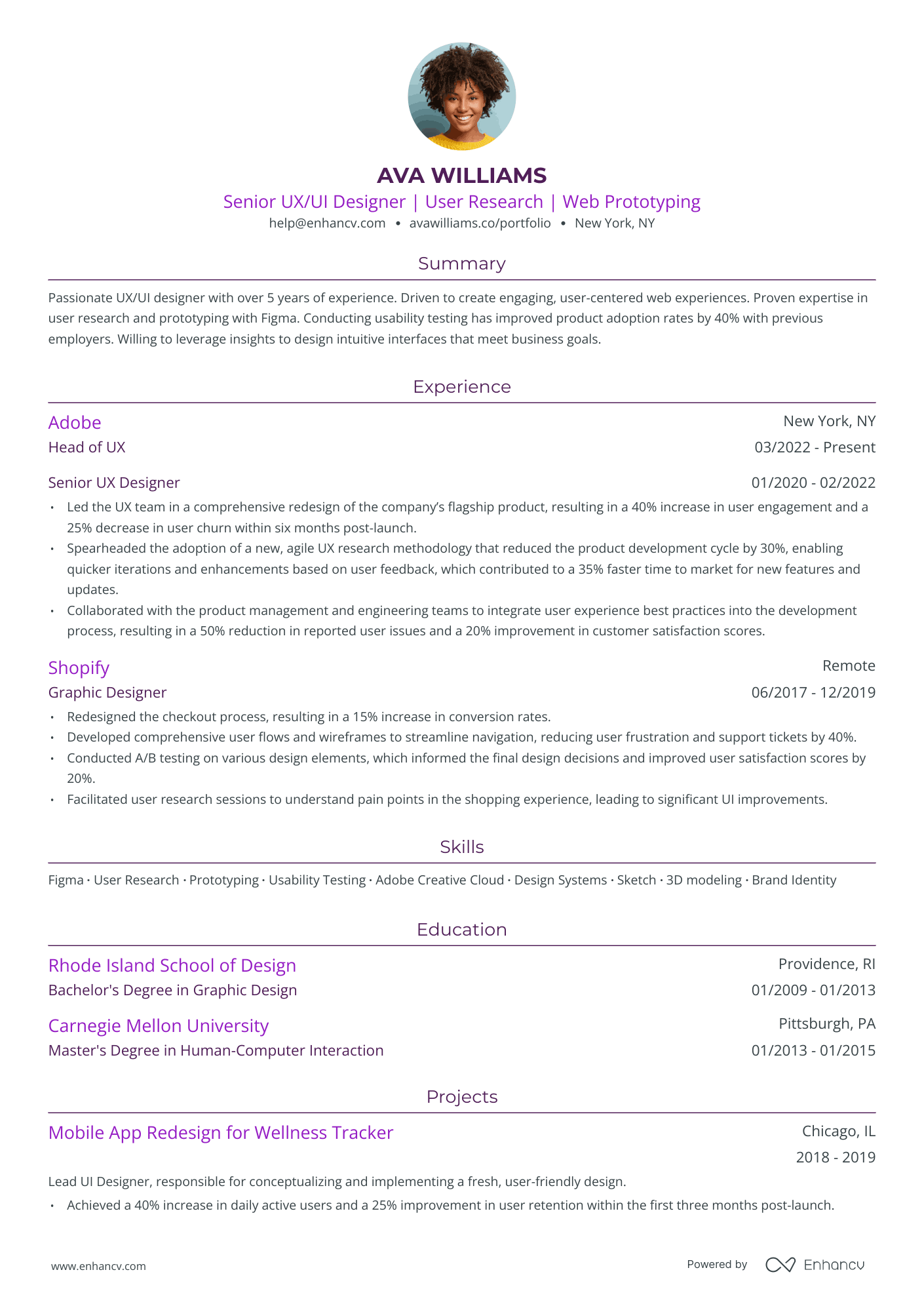
Listing non-consecutive jobs at the same company on a resume
For situations where you've left a company and then returned, or when you've transitioned into significantly different roles within the same organization, use this method. It’s a less common but still valid career move, so no need to worry that you might look inconsistent. Quite the opposite—such rehiring decisions show your adaptability and the desirability of your skills.
Format : Treat each tenure or role as a distinct entry, just as you would for positions at different companies, only make sure the company name remains consistent across entries. It's a good idea to include a brief explanation about why you joined the company again or shifted roles. This is your opportunity to highlight the unique value you bring and the trust the organization places in your capabilities.
Look at the example below to see how it’s done.
- • Spearheaded a multi-channel digital marketing campaign that increased the agency’s client base by 35% within one year, leveraging tailored content strategies and precision targeting.
- • Enhanced the agency’s SEO and PPC strategies, leading to a 50% increase in organic traffic and a 40% improvement in ad conversion rates, significantly boosting client satisfaction and retention.
- • Led cross-functional teams to align marketing objectives with business goals, ensuring cohesive brand messaging and maximizing ROI on marketing investments.
- • Led a digital transformation initiative that integrated advanced analytics and machine learning technologies, improving marketing campaign efficiency by 25% and reducing overall campaign costs by 15%.
- • Implemented a targeted email marketing strategy that enhanced open rates by 25% and click-through rates by 15%, directly contributing to a 20% increase in lead conversion rates.
- • Led a content marketing campaign that boosted website traffic by 40% and increased social media engagement by 60% within six months, utilizing SEO-optimized and user-centric content.
- • Overhauled the content production process, introducing content management tools and collaboration practices that reduced content development time by 30% and increased team productivity by 20%.
- • Led SEO initiatives that improved organic search rankings for 80% of targeted keywords within the top 10 results, driving a 50% increase in organic traffic to the company’s main website and contributing to a 35% growth in lead generation efforts.
- • Developed and managed a cross-platform content calendar that coordinated efforts across blogs, social media, and email marketing, resulting in a consistent 25% month-over-month increase in user engagement.
- • Designed and executed a comprehensive content marketing strategy that resulted in a 300% increase in blog traffic and a 200% boost in newsletter subscription rates over 12 months.
The best way to format multiple positions at the same company on a resume
When in doubt, use the failure-proof approach— the reverse-chronological resume layout . It’s the most logical format when it comes to career progression, as you start listing your experiences from the most recent jobs to older ones. It’s the one we’ve been demonstrating in the article so far.
Another great visualization tip is to use the Timeline resume template which allows you to clearly demonstrate your career progression. Have a look:
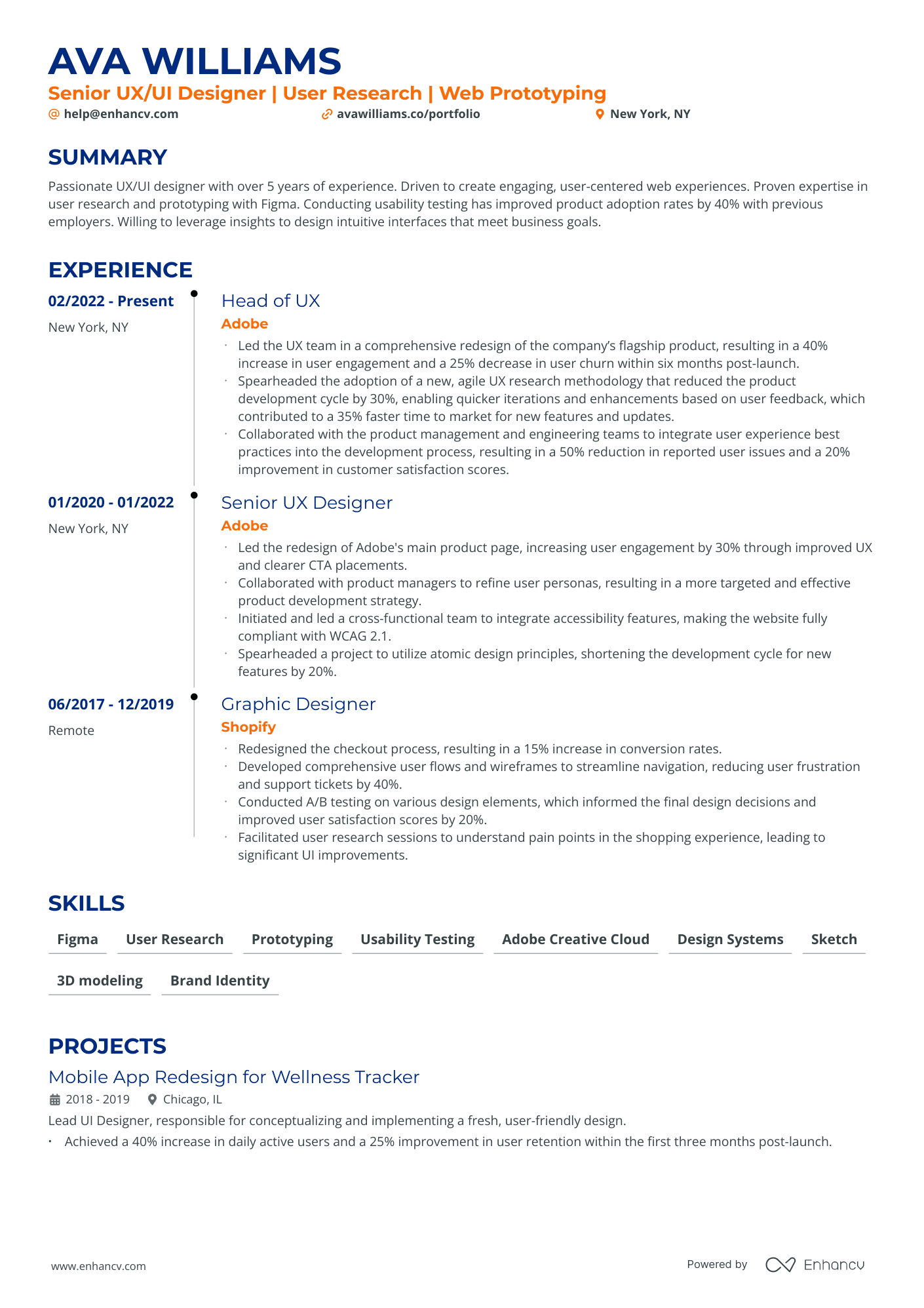
Make this your resume
Use Enhancv’s Resume Builder and make a resume that stands out.
This may not come as a surprise, but you should always tailor your resume content to the keywords listed in the job posting. You don't need to list every single job you've ever had. We recommend you to include only those that are relevant to the prospective employer. Below are the steps to achieve this:
- Study the job advertisement and highlight the keywords —responsibilities and skills needed.
- Match those keywords with your own strengths.
- Ensure you include these words in the appropriate sections of your resume (but don’t force their inclusion).
- List relevant work experience and omit jobs that are unrelated to the position you're applying for.
One of the most crucial aspects of the experience section on your resume is the measurement of your impact in previous roles. To truly stand out, go the extra mile by quantifying your achievements and providing concrete evidence of your successes.
Listing multiple positions within the same organization allows you to diversify your professional profile by incorporating a wide range of action verbs , skills, and quantifiable achievements. This approach can weave a compelling narrative of your work history, reinforcing your image as a loyal, versatile, and valuable employee. Therefore, instead of merely listing responsibilities, strive to build a genuine story about your work experiences.
Hopefully, this guide made it easier for you to craft a resume that highlights career progression within a single company. Let’s recap the main points.
- Listing multiple jobs within a single organization gives you the chance to create a solid work narrative and stand out as a loyal and growth-driven individual.
- Choosing how to list your job moves depends on your preferences, but the most common way to do that is by writing two separate experience entries under the same heading.
- Opt for a reverse chronological resume to best highlight your career progression and visualize your experiences with a timeline template.
- Enhance your career narrative with quantifiable achievements and strong action verbs at the beginning of each entry.
- Only list positions that are relevant to the job you are applying for.

- Resume Guides
8 Example Situational Interview Questions And Their Answers
When you should (and not) add dean's list on your resume, questions to ask your future manager before joining the team, real resume examples that stand out and get people hired, 214 unique action verbs to power up your resume, how to name drop in a cover letter.
- Create Resume
- Terms of Service
- Privacy Policy
- Cookie Preferences
- Resume Examples
- Resume Templates
- AI Resume Builder
- Resume Summary Generator
- Resume Formats
- Resume Checker
- Resume Skills
- How to Write a Resume
- Modern Resume Templates
- Simple Resume Templates
- Cover Letter Builder
- Cover Letter Examples
- Cover Letter Templates
- Cover Letter Formats
- How to Write a Cover Letter
- Cover Letter Guides
- Job Interview Guides
- Job Interview Questions
- Career Resources
- Meet our customers
- Career resources
- English (UK)
- French (FR)
- German (DE)
- Spanish (ES)
- Swedish (SE)
© 2024 . All rights reserved.
Made with love by people who care.
2 Jobs, 1 Company: How to Show Multiple Jobs or Promotions on Your Resume

There’s little downside to landing a promotion. Except, well, figuring out how to list it on your resume.
When you’ve moved from a position at Company A to a new position at Company B, structuring your “Experience” section is pretty straightforward. But if you’ve moved up in your department or switched roles within your organization, it’s not as clear.
The good news? If you can show off your advancement the right way, you’ll get a gold star in the eyes of a hiring manager. Read on for a super-quick guide to showcasing your experience in the best possible light—and landing that next big opportunity.
Here are your options for listing a promotion or multiple jobs at the same company on your resume:
1. Stack your position titles together and combine bullet points.
If two or more of your jobs were very similar in nature (e.g., you were promoted from associate editor to editor, but your overall job duties pretty much stayed the same), use can list the job titles one after the other under your company header, like this:
The Green Company, Los Angeles, CA
Editor (January 2021–Present)
Associate Editor (January 2019–January 2021)
The bullets you include should describe your most high-level and impressive accomplishments during your tenure at both of these roles combined—not each individually. As you decide what to include, remember that your resume is a marketing document selling you as the perfect person for the job, not a comprehensive list of your career history . In other words, even if your duties slightly shifted when you changed positions, it’s more important to highlight your best work than to spell out all of your daily tasks in those early days.
Before you choose this option, consider whether your resume will be passing through an applicant tracking system (ATS) , which is software that companies use to parse and organize resumes. If you stack your titles like this, ATSs may attribute all your bullet points to your earlier, more junior title rather than the later, more senior one.
While there’s not a surefire way to prevent an ATS from getting confused if you use this method, there is one thing you can do to make it easier for human readers to quickly make sense of the double title. Simply include a bullet that expands upon the accomplishments that led to your promotion (for example, “Promoted to Senior Account Manager within 12 months for exceptional client relations and leadership skills”). This will make it clear to any human reading your resume that your accomplishments apply to both positions—and that your move wasn’t just a matter of happenstance, you earned it.
2. Separate your position titles and bullets under one company heading.
If the jobs you’ve held at your company were in different departments (e.g., you moved from the marketing team to the content team) or your accomplishments and duties changed significantly after a promotion, list the company once but break out the job titles, treating them like two different positions:
Associate Editor (January 2021–Present)
Marketing Coordinator (May 2019–January 2021)
Again, for each position, you’ll want to describe your biggest accomplishments and the experience that most relates to the positions you’re applying for. And if the new role was a step up, rather than a lateral move, be sure to make that clear, saying something like: “Promoted within company because of demonstrated project leadership skills,” under the more senior position.
While hiring managers may need a moment to figure out what company your earlier position was for, your accomplishments and duties will be attributed to the correct roles.
3. Create entirely separate experience entries.
If your positions weren’t one after the other—for example, you went to work for a different company and then returned—you’ll want to create standalone experience entries for each. That means listing the company more than once. But that’s OK. Even if it’s repetitive, the hiring manager will see that you’ve moved up within the same company.
You can also use this method if you want to be extra sure there’s no confusion when your resume passes through an ATS—even if the jobs were consecutive.
So this might look like:
Editor, The Green Company
January 2021–Present | Los Angeles, CA
Associate Editor, The Green Company
January 2020–January 2021 | Los Angeles, CA
Like with the previous methods, you can list your promotion or the accomplishment that led to it as one of your bullet points under the job you were promoted to.
Moving up at a company shows that you’re a high performer, you achieve results, and you’re a loyal and dedicated employee. Make sure your resume tells that story—and you’re bound to land an interview.
Regina Borsellino also contributed writing, reporting, and/or advice to this article.

Multiple Careers Resume Example
This resume example shows two different versions of a resume. In this case the before version isn’t a bad resume. The before version just has a different focus and job target.
The result is two completely different resumes representing the same person. This provides us with an example of how you can market the same person for different career paths.
The first one represents the job seeker’s volunteer work experience, and the second one represents his professional work experience.
This individual has a very impressive record of service in relation to his church, and prefers to transition his volunteer experience into a full-time position within the church but he understands that this endeavor may be more of a challenge.
The resume writer’s strategy was to create two very focused resumes, leaving Marco open to explore both career paths.
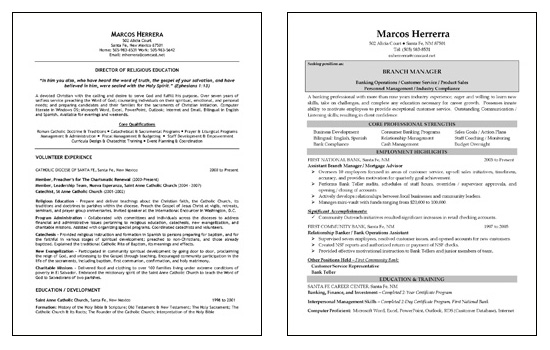
Multiple Careers Resume Example – Before and After
General Business Resume Statements
- Extensive experience in banking, customer service and personnel, capable of motivating staff and providing top level client support.
- Innovative and articulate communicator with outstanding listening skills.
- Core knowledge of business development, consumer banking, sales, relationship management and compliance.
- Recruit, train and coach staff with full supervision of 10 team members.
- Results-oriented leader with track record of improving sales, enhancing profitability and meeting corporate objectives.
- Fluent in English and Spanish, providing exceptional customer service in diverse communities with strong minority presence.
- Motivated, hard working and reliable manager with track record for improving productivity in business practices.
- Problem solver with demonstrated success analyzing issues and creating quick solutions that lead to a positive effect on the bottom line.
Multiple Careers Resume Guide
Looking for a new job can be challenging, especially if you have had multiple careers. But fear not because there is a resume format specifically designed for individuals like you.
This type of resume allows you to showcase your diverse skills and experiences while tailoring it to each job application. Known as a combination or hybrid resume, this format combines the best elements of a chronological and functional resume.
It starts with a skills section, where you can strategically use keywords from the job description to catch the hiring manager’s attention. Then, it highlights your work experience, focusing on common skills such as customer service and computer proficiency.
Creating a resume may seem daunting, but with the right template and format, you can effectively showcase the skills and experiences from your different careers. So, don’t let your diverse background hold you back – embrace it and show employers why you are the perfect fit for their team.
What Kind of Resume Should I Use If I Had Multiple Careers?
If you’ve had a diverse range of careers, you might wonder what type of resume would most effectively showcase your skills and experiences.
When creating a resume for multiple careers, choosing a format highlighting your transferable skills and accomplishments in each field is important. One option is to use a combination resume format, which allows you to group your achievements by skill rather than by job title. This format is handy if you’ve had multiple jobs within the same company or worked for different companies in similar roles.
For each job, include the company name, job title, and a brief description of your responsibilities. Focus on the achievements and skills most relevant to your new career, and quantify your accomplishments whenever possible. For example, if you were a sales manager in one career and a project manager in another, you could highlight your ability to meet sales targets and successfully deliver projects on time and within budget.
In your resume objective or summary, explain your motivation for making a career change and highlight the skills and experiences that make you a strong candidate for your new career. Tailor your resume to each job application by including keywords from the job description, and provide specific examples of how your skills and experiences align with the position’s requirements.
By following these guidelines and using a well-crafted resume format, you can effectively showcase your diverse skills and experiences and position yourself as a qualified candidate for your new career.
What Is a Combination/Hybrid Resume?
A combination or hybrid resume blends the best elements of a chronological and functional resume to showcase a job seeker’s diverse skill set and accomplishments. This resume format is ideal for individuals who have had a few previous careers and want to highlight relevant skills and experiences for a specific job.
When creating a combination resume, starting with a professional resume template and format easy for employers to read and understand is essential. Begin with a resume summary that briefly overviews your qualifications and highlights your most relevant skills and accomplishments. Use bullet points to list your experiences and achievements, and tailor your resume for each job application by incorporating keywords from the job description.
The combination resume allows you to organize your work experience in reverse-chronological order while emphasizing your skills and achievements. This format is effective because it will enable hiring managers to quickly assess your qualifications and see how your diverse background translates to the desired position. Using bullet points, you can provide specific examples demonstrating your abilities and showcasing your value to potential employers.
A combination resume is the perfect choice for individuals with multiple careers. It allows you to highlight your transferable skills and accomplishments, making it easier for hiring managers to see your potential fit for a particular role. Take the time to tailor your resume for each job application and incorporate keywords from the job description to increase your chances of success.
Good keywords to sprinkle into your resume could include progressive responsibilities, communication skills, real-world, cross-functional, problem-solving, and results-driven. Also, use action verbs in your resume and cover letter.
Should I Use a Combination Resume if I Had Multiple Careers?
The versatility of a combination resume allows job seekers to effectively showcase their diverse skill sets and accomplishments, making it an ideal choice for individuals who have embarked on various professional paths.
Whether you’ve changed careers multiple times or have held different positions within the same industry, a combination resume can effectively highlight your transferable skills and experiences.
Recruiters and hiring managers understand that people change careers for various reasons, such as seeking new challenges, pursuing personal interests, or adapting to industry changes. Using a combination resume, you can strategically organize your work history to emphasize relevant skills and achievements. This format allows you to highlight your most impressive accomplishments in each role, regardless of the industry or position.
A combination resume is particularly beneficial if you have years of experience in different fields or have held roles that require a diverse skill set. It can also be helpful if you’ve been promoted within your company or have successfully transitioned into a new position. A combination resume allows you to showcase your adaptability and versatility, which are highly valued by hiring managers and human resources professionals.
If you’re unsure about how to present your many previous careers on a resume effectively, consider seeking the assistance of a professional resume writer. They can help you tailor your resume to each job application, ensuring that it effectively highlights your skills and experiences most appropriately.
Remember, the goal of your resume is to make a strong impression on hiring managers and show them why you’re the best applicant for the job.
What Goes Into a Combination Resume and in What Order?
Crafting a combination resume is like creating a delicious recipe, carefully layering your skills, experiences, and accomplishments to create a winning dish that stands out to hiring managers. When you’ve had different careers or have worked in various positions, a combination resume is an effective way to showcase your professional experience. It allows you to chronologically highlight your skills and achievements, starting with your most recent and relevant ones.
In a combination resume, you should begin with a resume summary or objective that provides a snapshot of your career paths and highlights your key qualifications.
Next, you should include a skills section that showcases the specific skills you possess that are relevant to the next job you’re applying for.
Following the skills section, you should include your professional experience, starting with your most recent role and working backward. In this section, you should highlight the accomplishments and responsibilities most relevant to the position you’re applying for.
You should include an education section that lists your educational background, including any degrees or certifications you’ve earned. This section can also include any relevant coursework or academic achievements.
By organizing your resume this way, you can effectively demonstrate your diverse experience and show potential employers how your skills and accomplishments from one job can transfer to the next.
How Do You Create the Skills Part of a Combination Resume?
Mastering the art of creating a combination resume requires strategically showcasing your skills to captivate potential employers and make your application stand out.
In the skills section of your resume, it’s vital to use bullet points to clearly and concisely highlight your abilities. Start each bullet with a strong action verb to give your skills more impact. Instead of simply listing your skills, include specific accomplishments or experiences demonstrating your proficiency in each area.
When writing a resume for multiple positions at one company or for different careers, it’s essential to tailor your skills section to match the job requirements you’re applying for. Carefully review the job description and identify the critical skills and qualifications they seek. Then, select the skills from your background that align with those requirements and include them in your resume.
Remember to include any relevant certifications or additional training you’ve obtained. This will further demonstrate your commitment and expertise in the skills you possess.
Creating a strong skills section in your combination resume is crucial to showcasing your abilities and making a positive impression on potential employers. By highlighting your accomplishments and aligning your skills with the job requirements, you can increase your chances of landing an interview and ultimately securing your desired career change.
In conclusion, a multiple careers resume is a powerful tool for showcasing diverse skills and experiences. Using a combination/hybrid resume format, you can effectively highlight your transferable skills and make a strong case for your suitability for the job.
Remember to prioritize the skills section and tailor it to the job description. Don’t forget to proofread your resume for errors and consider adding visual interest with color.
With a well-crafted resume, you can confidently navigate the job market and land your dream job. Embrace the challenge and let your versatility shine!
Related Resume Examples
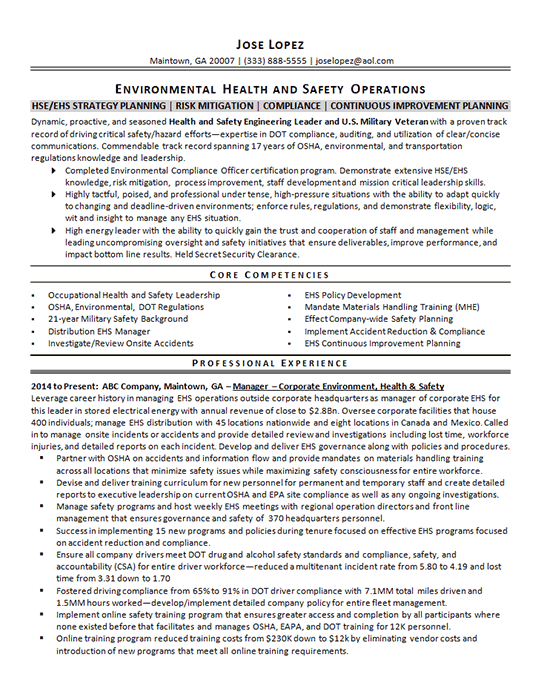
Environmental Operations
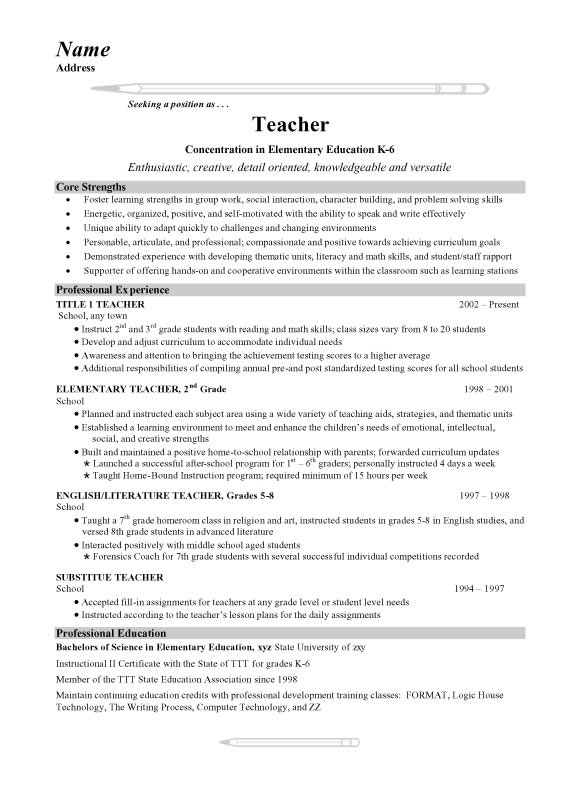
Grade School Teacher
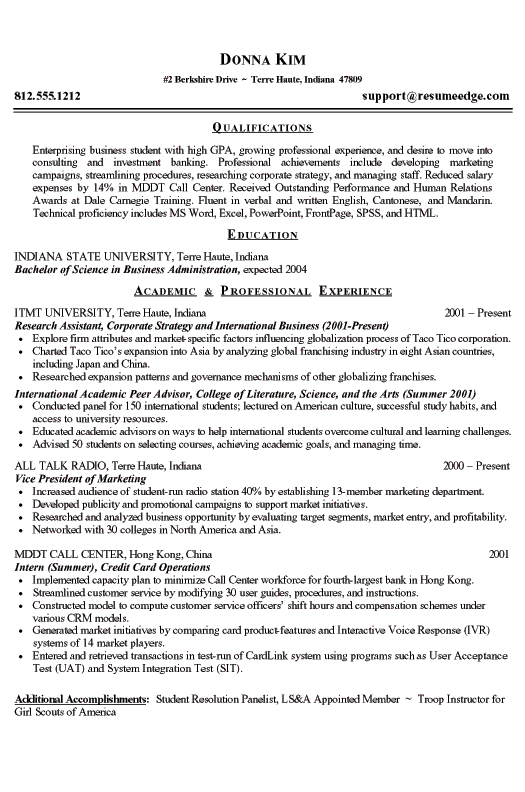
College Student
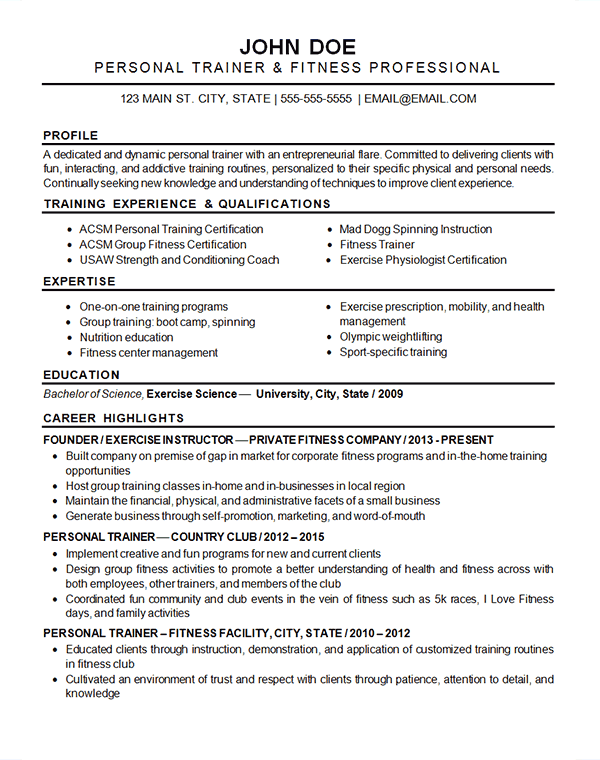
Sports Fitness
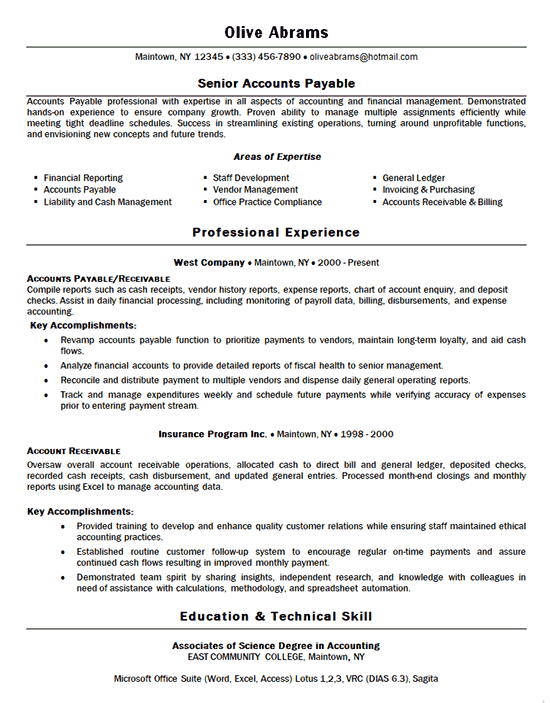
Accounts Payable
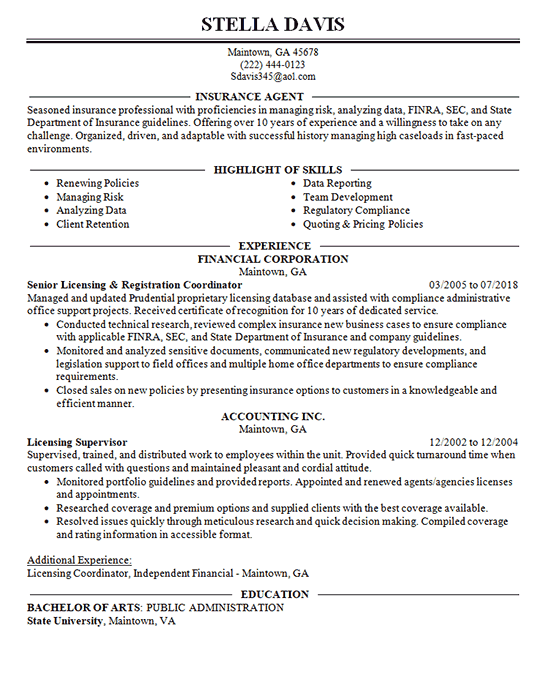
Insurance Professional
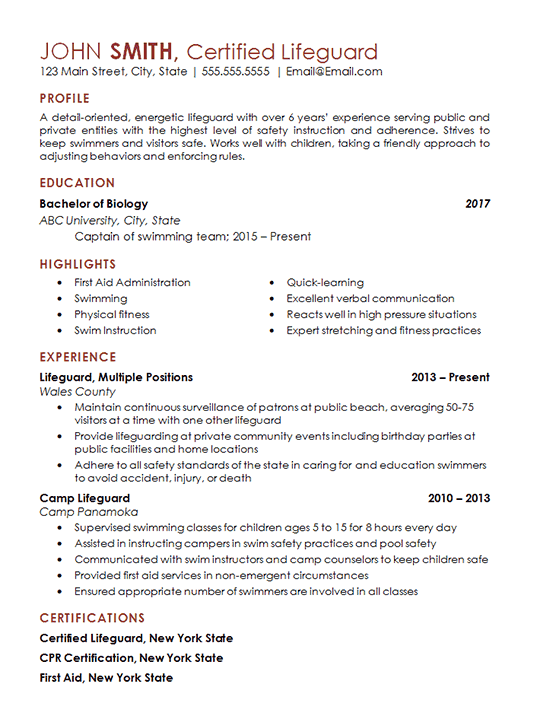
Lifeguard – Certified
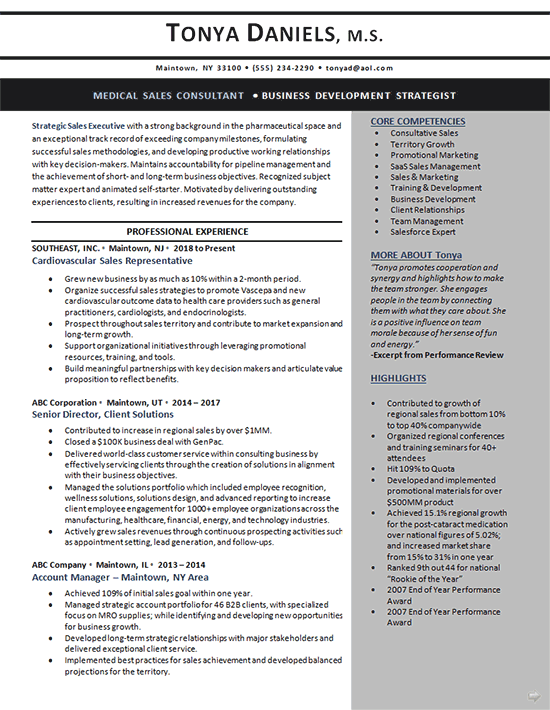
Medical Sales Consultant
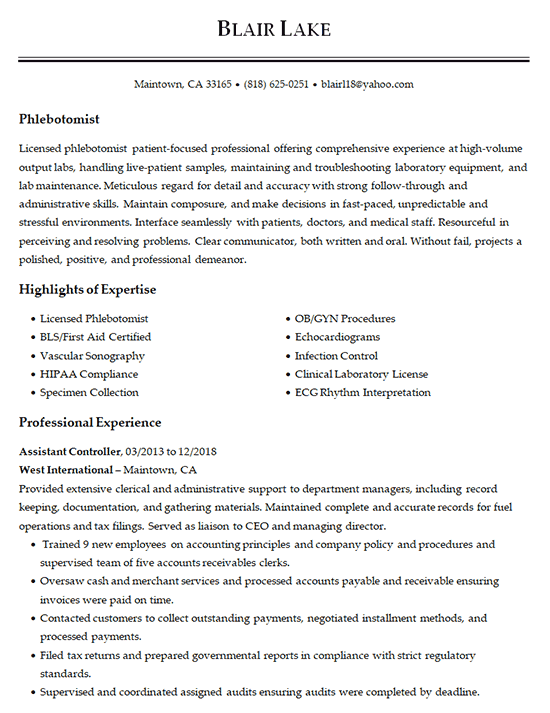
Phlebotomist
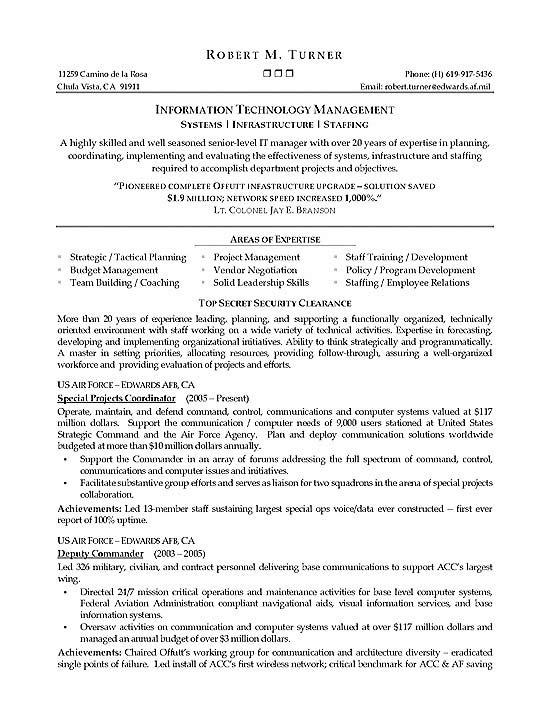
Infrastructure Manager
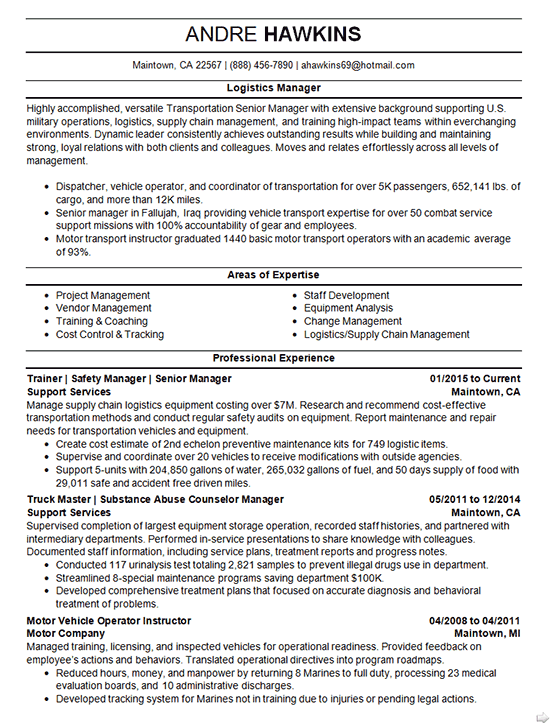
Logistics Manager
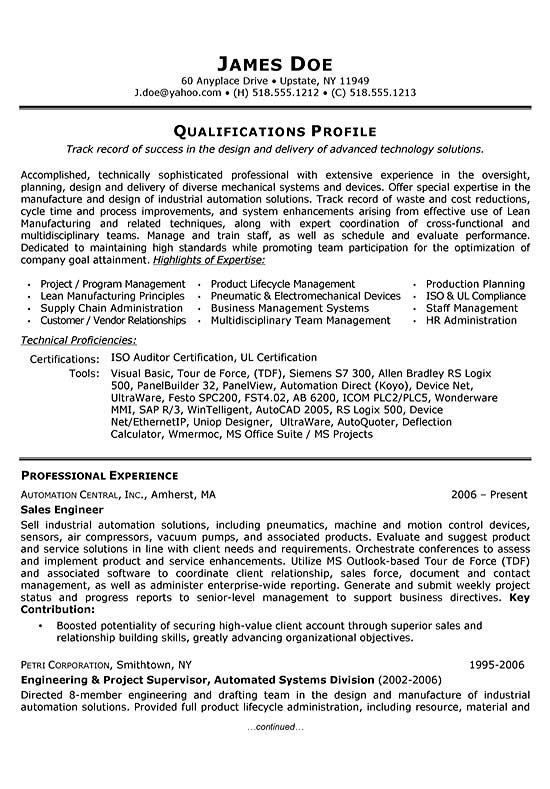
Sales Engineer
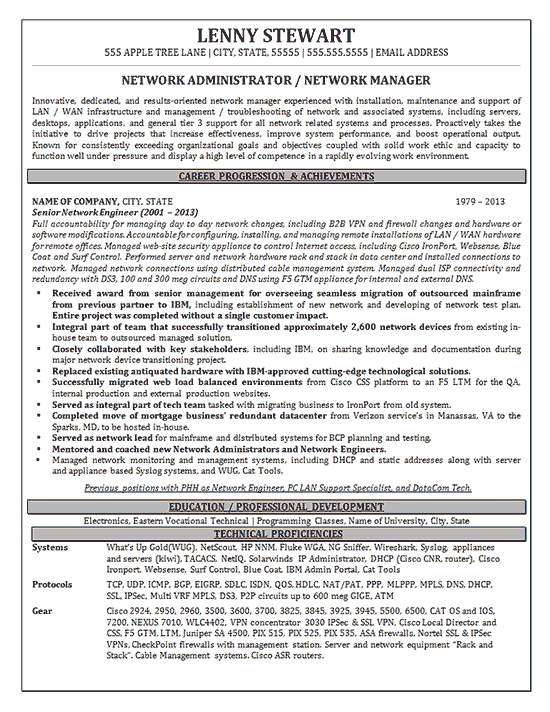
Network Manager
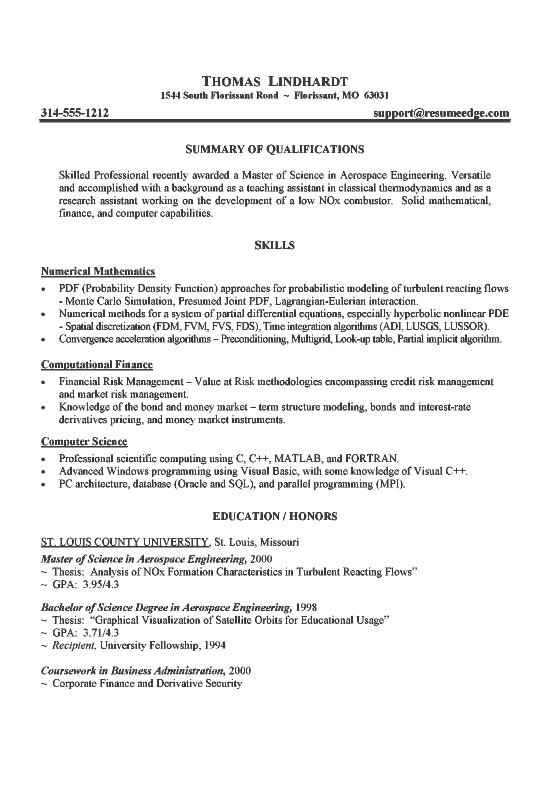
Aerospace Engineer
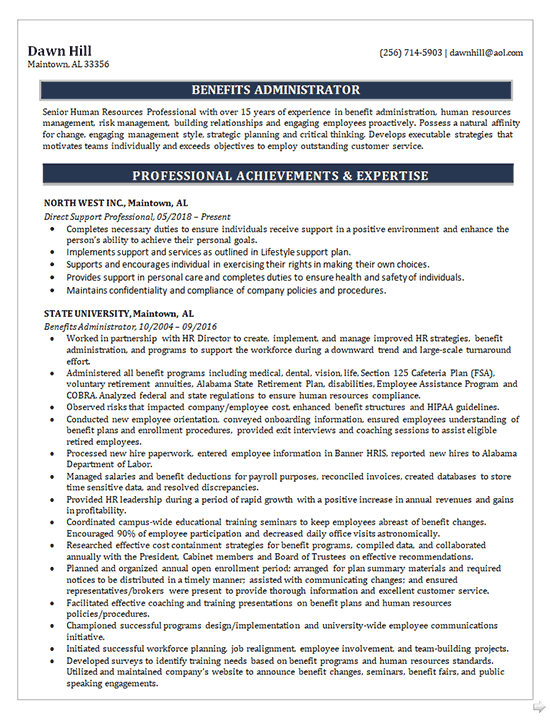
Benefits Administrator
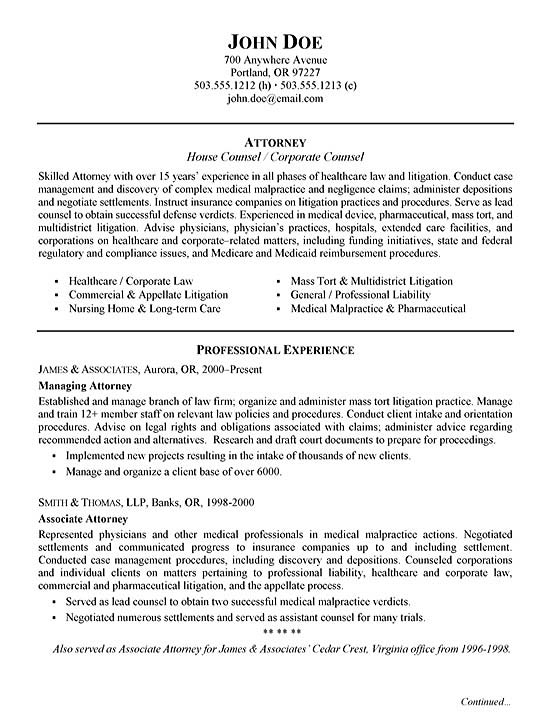
Healthcare Attorney
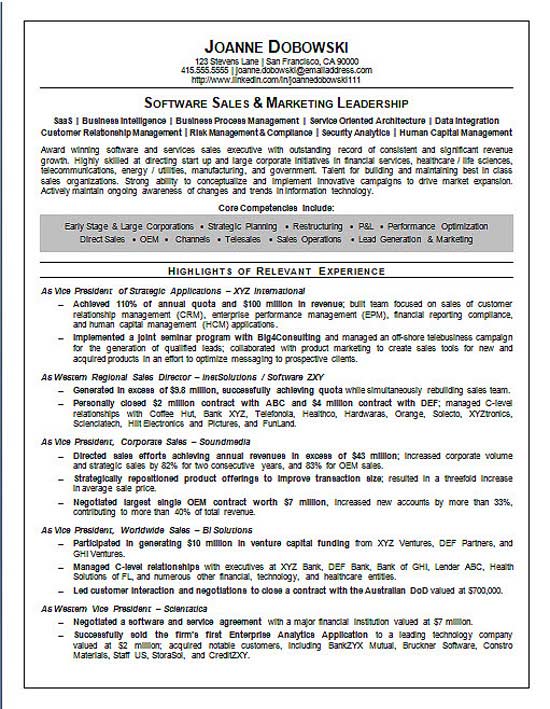
Software Sales Executive
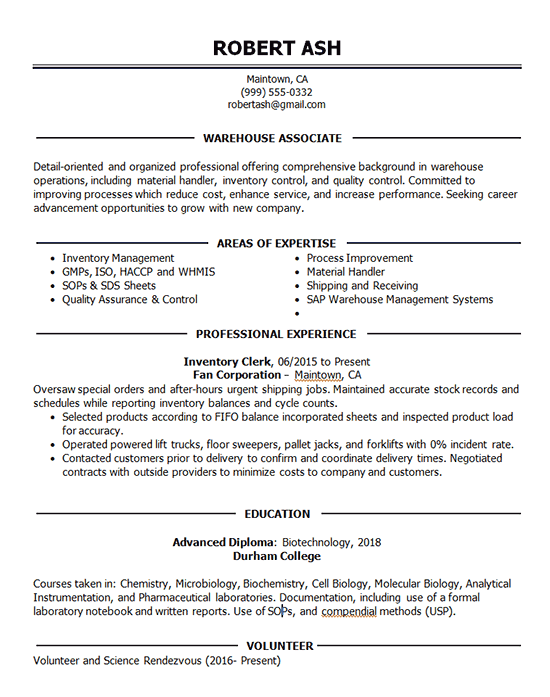
Warehouse Associate
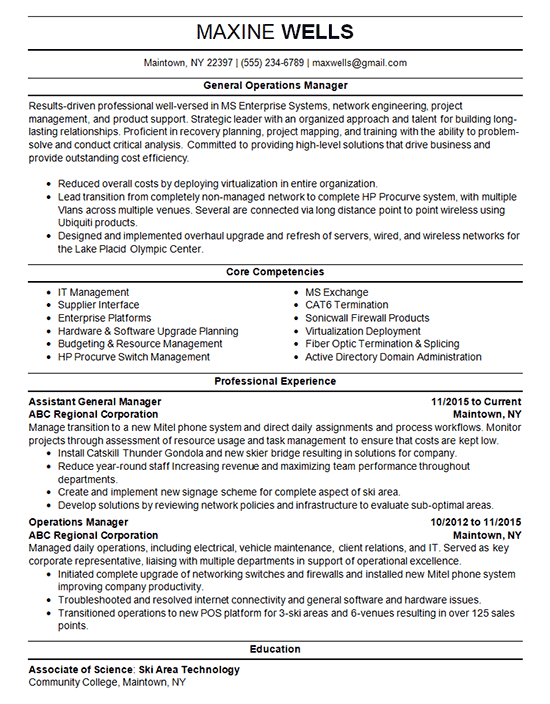

Information Systems Manager
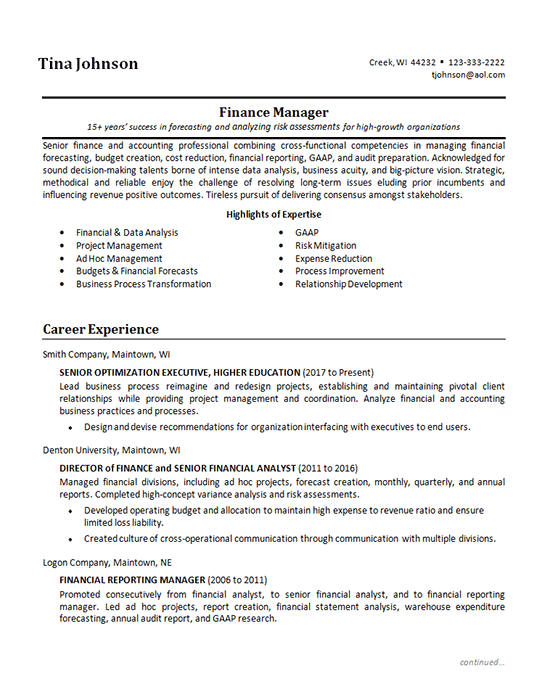
Senior Finance Manager
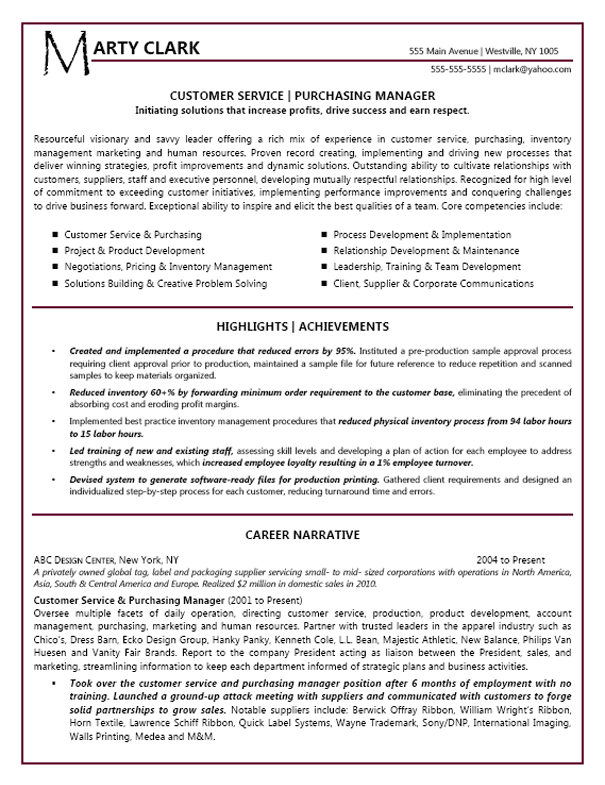
Customer Service Manager
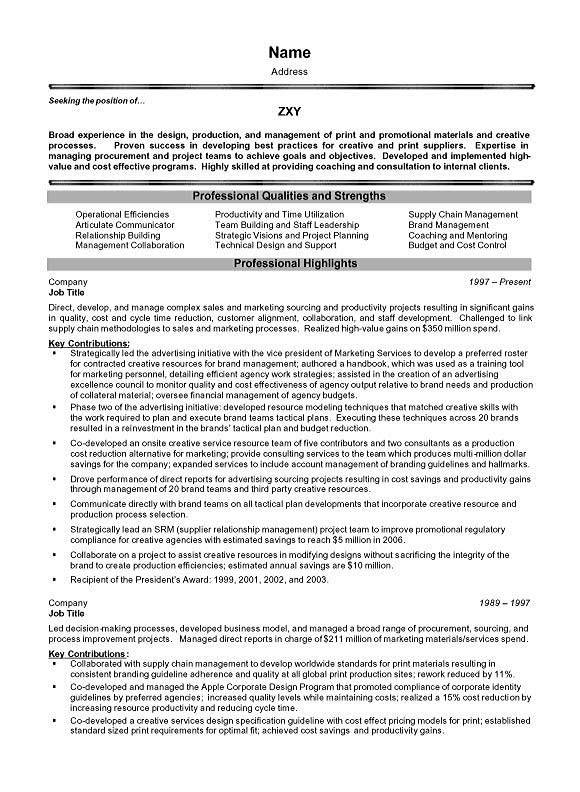
Project Management Executive
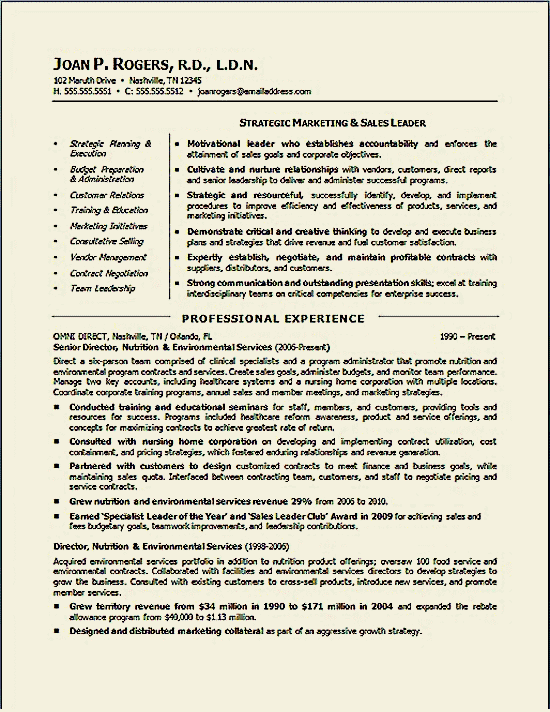
Environmental Director
Police commander.
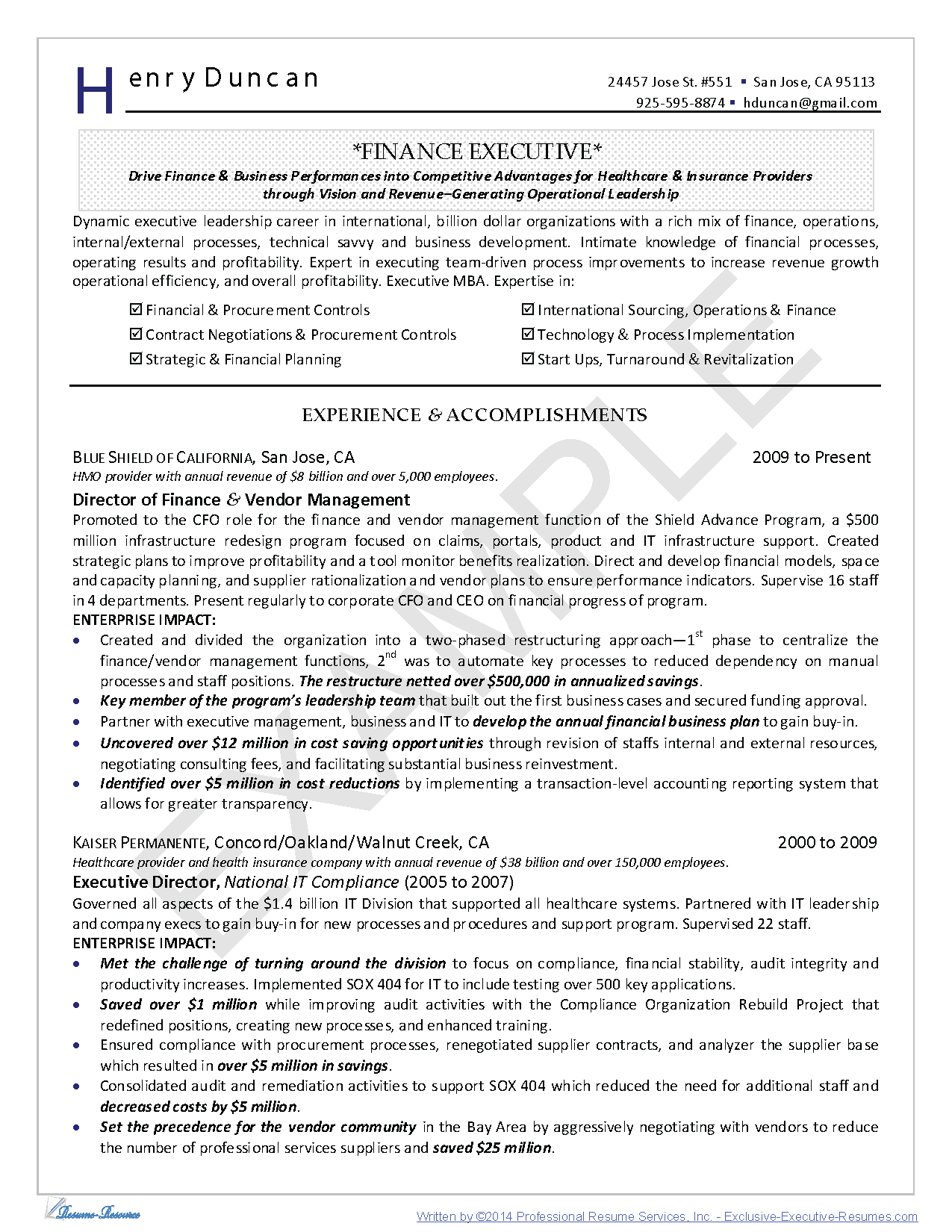
Director of Finance
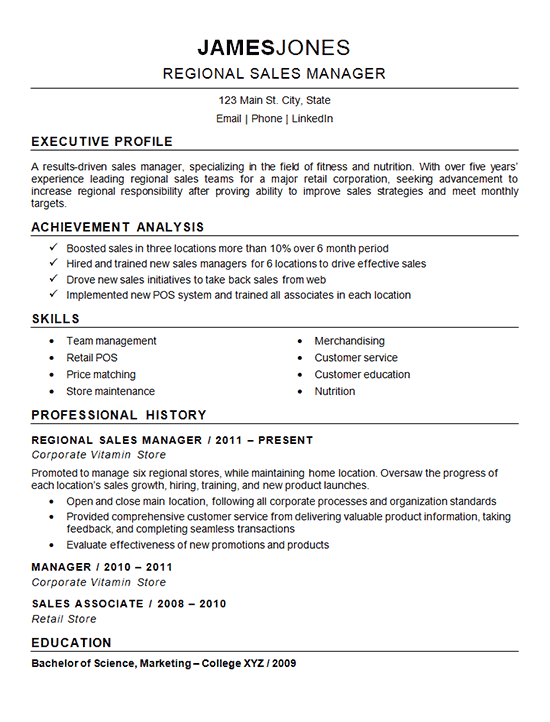
Regional Sales Manager
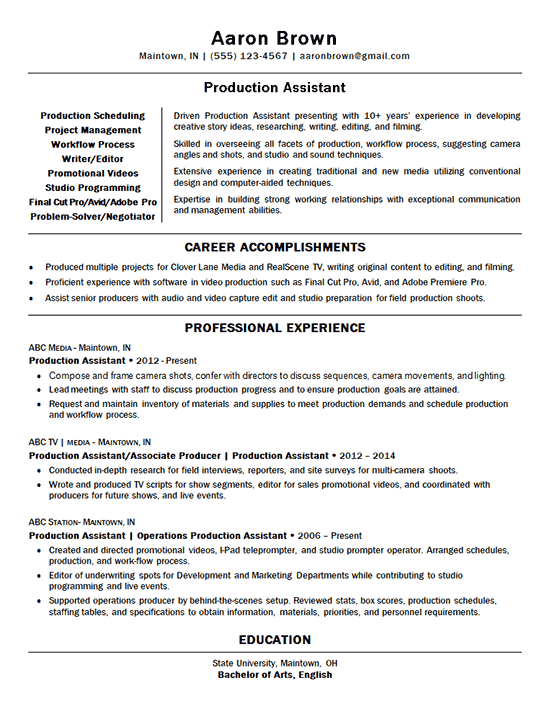
Production Assistant
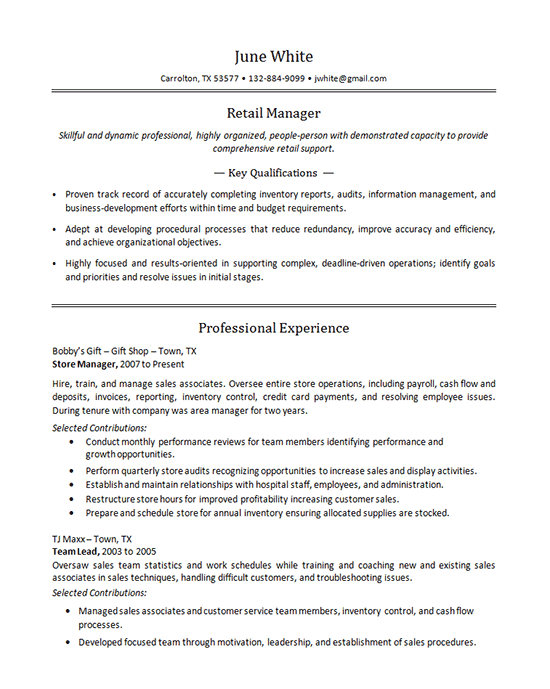
Retail Management
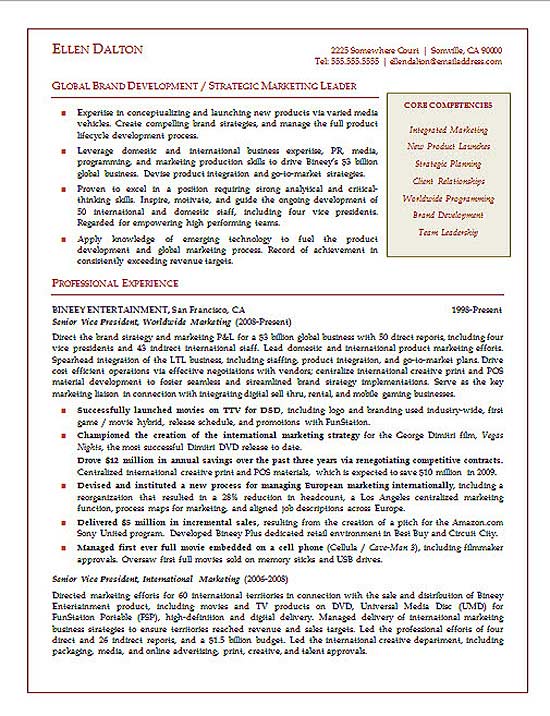
Strategic Marketing Executive
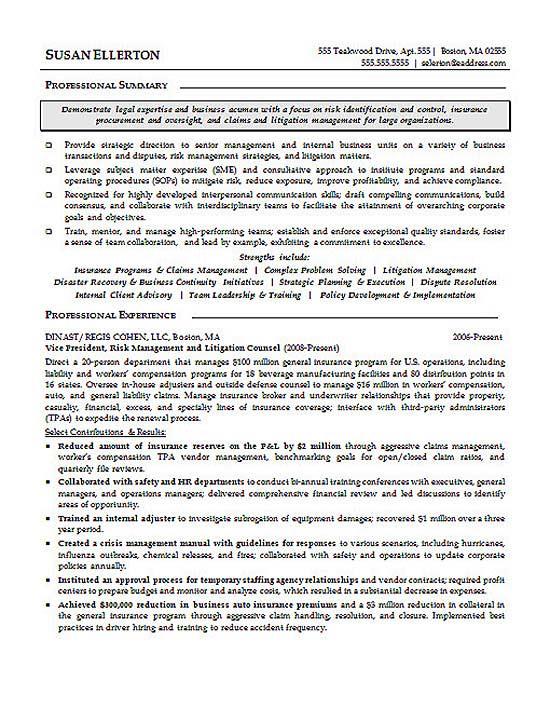
Litigation Attorney
- Next »
Latest Resumes (PDF & DOCX)
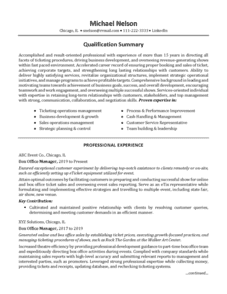
Box Office Manager
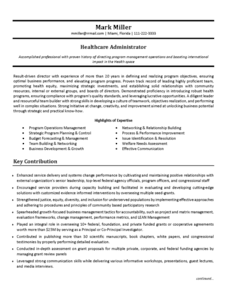
Healthcare Administrator
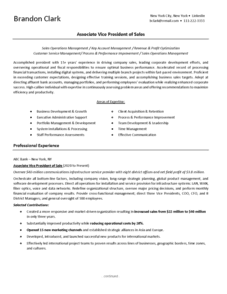
Vice President of Sales
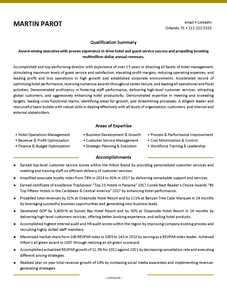
Hotel Management
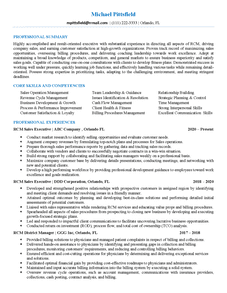
Sales Professional
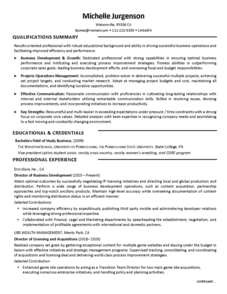
Director of Business Development
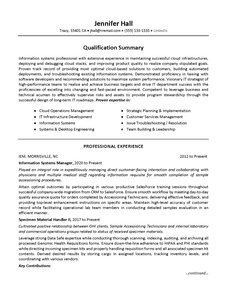
Information Systems
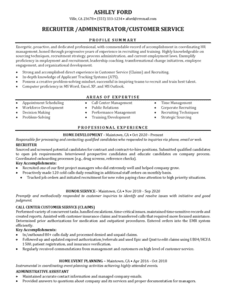
Sales & Marketing Assistant
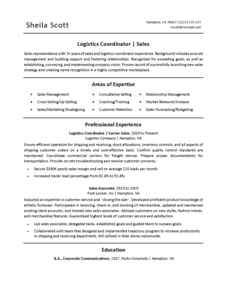
Logistics Coordinator
Latest resume writing & career articles.

How To Add Github On Your Resume

How To Put Fraternity On a Resume

8 Of The Best Careers To Go Back To School For

How To Put Eit On Resume

How To Add Military Experience To A Resume
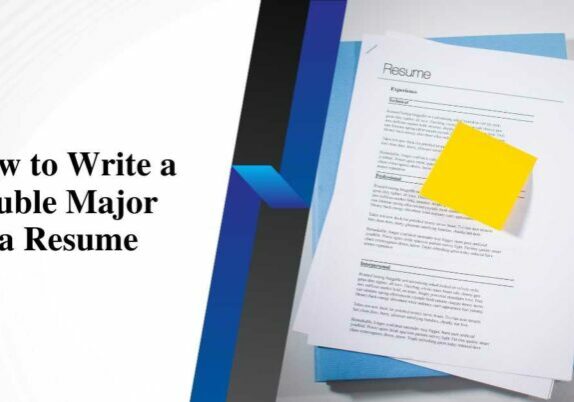
How To Write A Double Major On A Resume – Pro Tips

How To List Temp Work On a Resume

How To Include Work Projects In Your Resume

How to Mention a Referral in a Cover Letter to Increase Your Hiring Chances

How To Name-Drop A Referral In A Cover Letter (6 Tips For Success)

How To List Your Nanny Experience On A Professional Resume

How To Say Quick Learner on a Resume + 5 of the Best Synonyms To Use
The analyses and opinions presented on Career Cloud are our own. We may receive commissions from purchases made after visiting links within our content.

How to Write a Resume for Multiple Jobs at One Company

Table Of Contents
1. show how you grew professionally within one department., 2. focus on the list of positions..
Crafting a resume is one of the keys to getting the job of your dream. However, unfortunately, not all people realize how a good resume should look like. What if you worked for one company for a long time without leaving it and got promoted within your department? What is the best way to list these promotions and your changed position on your resume?
If you do not know the answer, do not feel sad. It is good enough that you understand the significance of a good CV, and with our simple tips, you will be able to craft an outstanding resume which will get you the position you always wanted. So, if it is the kind of knowledge you can use right now, then read on and utilize our advice for your own benefit.
Require guidance on how to get started? We have evaluated the best resume-writing services .
There are several approaches to this issue. They have some similarities but still differ in the core structure. So, be careful with what you choose for your CV.
It is a great thing if your management promoted you within one department. It means that you are an excellent employee able to learn fast and take your knowledge to the next level. Therefore, you should show it correctly in the resume so that other potential employers can see it the same way.
Thus, what you can do is make a list of all job positions you held in one company. Write the name of the company and its location and right below it mention all the major positions you held.
Join The Break Community
Remember that the most recent position should be at the top of the list while the others should be written down from the latest to the earliest. Do not add too many positions, though. And if you can combine some of them at one point, do it.
Under each position, add several points which will state what your key responsibilities were. We would recommend you to edit your resume in case you mentioned these responsibilities in a way other than listing your greatest achievements. Employers want to see the results and the most significant benefits you brought to your company. So, instead of mentioning some tasks you dealt with, demonstrate what you achieved. For instance, say that once you became a regional manager of the supply company in question, you created a scheme which made deliveries faster and made customers happier.
This is one of the options, but there is another one. So, read on.
In the option above, you focused on demonstrating your achievements at each of the positions. However, what we offer now is focusing on the list of posts you held with dates next to each of them. Instead of mentioning achievements at each job, you can try focusing on delivering a combined list of your accomplishments at all the positions. Simply indicate that you were promoted. Meanwhile, under this list, mention how you contributed to the company in general as well as what you learned while working there.
Keep it short, though. We are sure that there are plenty of things one can write in each line, but the truth is employers do not have that much time to read it all. So, instead try your best to choose the most impressive facts and add them to your resume. Do not bore employers to death with detailed explanations. You can add a link to your LinkedIn profile where there are more details available .
Also, remember about proper formatting which will make it easier for the employers to go through your resume. Do not choose small or hard-to-read fonts. And let the text flow from one point to another smoothly by inserting dates and creating headlines for each position.
These are only two of the most efficient ways to compose a resume that could help you get the desired position. They both offer you a chance to show how you climbed the career ladder as well as what progress you made while working at some company. Such layout will make it easier for you to put emphasis on special achievements, so a potential hirer will be able to see how you grew and contributed to the company.
So, if you got promoted several times at some company, then choose one of these two options of demonstrating your skills and experiences, so that the next employer will love your resume and will choose you over the rest of the candidates. Do you know any other secrets to creating a proper resume in such case? If so, then share them with us! We would love to hear more about your experience.
Want to explore more options for finding work? Our guide lists the top free job posting sites to aid your search.
Lori Wade is a freelance content writer who is interested in a wide range of spheres from education and online marketing to entrepreneurship. She is also an aspiring tutor striving to bring education to another level like we all do. If you are interested in writing, you can find her on Twitter or Google+ or find her on other social media. Read and take over Lori’s useful insights!
Michael Gardon
Mike is our Founder, career coach, and resident expert on all things resume, hiring and work-life. He is author of The Break newsletter and host of The Break Podcast on Careercloud. He has seen everything from being hired (and fired) to hiring and managing hundreds of people over his career. Mike has also successfully navigated many career pivots. He is a former derivatives trader turned corporate consultant turned entrepreneur who also holds a Bachelors' Degree from the University of Wisconsin-Madison and an MBA from DePaul University in Chicago. Mike is often interviewed and quoted on career topics in major publications such as Business Insider, Forbes, USA Today, Yahoo Finance and Fox News. Mike resides in the beautiful midwest where he built a life around his family. Connect with Mike to talk purpose, career change, entrepreneurship and side hustles like Quotebook , which he built with his kids!

Why losing your job is the best thing that can happen to you

Biggest Mistakes Recruiters Make When It Comes to Interviews
Want to build an unbreakable career.
- Knowledge Base
- Free Resume Templates
- Resume Builder
- Resume Examples
- Free Resume Review
Titles are useless!
You may be an intern and deliver extensively to benefit your company. Or, a company could hire you as a Vice President and not garner enough support to fit the role.
Therefore, job titles for resumes are only intended for the recruiters to gather which profile you are targeting so that they can assess your skills and roles.
We are here to help professionals confused in choosing the suitable profile title for their next job switch.
Along with a few company resume title examples, we have answered the following questions on how to update a resume:
- How to show promotion on company resume?
- How to put multiple positions at the same company on a company resume?
- What to title your company resume?
- How to write a company resume with multiple jobs?
Highlight Your Promotion on Resume: Internal Resumes
You must show your company resume to the recruiter while you're on track to promotion, even if you've been with the organization for many years.
How to Show a Promotion on a Resume?
Making a company resume for promotion can be pretty tricky.
When you achieved something during your tenure at the company, your boss might have been aware of it. But after its been a while, you need to remind your managers of all your rewarding endeavors.
Although making an excellent company resume for promotion is time-consuming, taking the time to highlight your achievements and skills is well worth the effort.
The following pointers should help you build the correct company resume points for your company resume or CV:
Write the company resume the same way you would to apply at a new place. It is not necessary that because you are applying for a promotion, the manager will be well-aware of your work.
Compose your key achievements sections in one-liner bullet points. Write all the circumstances where you led a team or took the initiative.
Pen down any obstacles or challenges you went through for each of your listed achievements. For example, if you managed and launched a product, write what difficulties you faced and what you did to overcome the problem.
Make a list of all the characteristics or qualities you know will be necessary for applying for the new position. Match your skills with those required by the future job.
Demonstrate all the experiences where you used the skills in your previous job profile required by your future job.
Add any workshops, conferences, or courses you attended. If your current employer offered you these, then do not think of not mentioning them in your company resume.
Explain how you developed new skills and growth through these training and prepared yourself for your future role.
Include any examples where you put extra effort into something you've done.
For example, assisted in working in place of absent workers, voluntarily took on additional duties, worked overtime, etc. Writing down these different initiatives will make the employer notice that you are a hard worker.
Write any letters of praise or awards you received during your tenure in the company.
Add any problem-solving tasks or committees you've participated in. Write any positive results of your suggestions which were implemented.
Demonstrate any situations where you showed your communication skills, teamwork, or reliability. Most employers look for these qualities.
Being an internal candidate, you have more chances of getting that position than external applicants.
Showcase your loyalty and familiarity with your recruiter and the company during your tenure here.
Write your company resume points in reverse chronological order to put more emphasis on your achievements related to your new position.
Include your key skills section at the top of the company resume. Write all the relevant skills you possess relevant to the new position.
Concisely write your company resume. Make sure your points do not exceed one line and that you highlight all the essential words and phrases in every line.
Also, please do not send your resume forward without conducting a spell check on it.
Let's take a look at one of our sample company resumes for internal promotions from RPA Program Manager to Cognitive Services Leader:
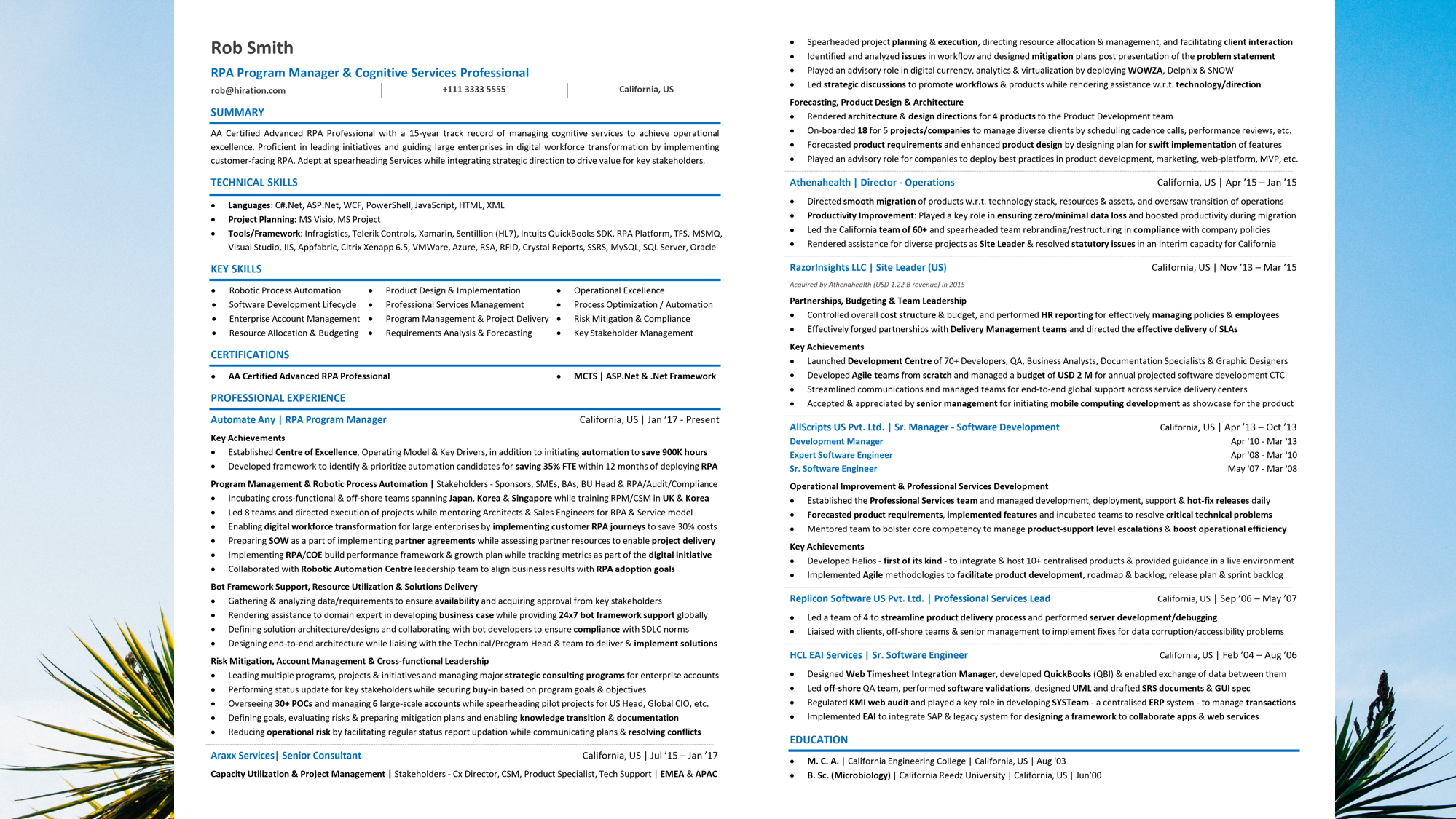
Write your company resume professionally and lay it out so that it stands out from other people's company resumes.
A great way to show that your previous managers valued your performance at work is to highlight your promotions. In addition, demonstrate in your company resume how you were able to manage different responsibilities.
You can describe your promotion in the following way:
- Selected for high-priority initiatives and recognized for top performance.
- Demonstrated ability to learn quickly and earned promotion following the same.
- Accelerated to more responsible positions by building a skill-driven career.
- Achieved promotional advancement from earlier positions.
Also Read: How to build a 2 page resume format in 2022?
Multiple Positions in a Resume
There are different ways to highlight in your resume the different positions you have held or are holding in a company.
Doing so can give the recruiters insight into all the roles and responsibilities that define you as a professional.
You can highlight multiple positions in your resume to make the recruiters see your dynamic expertise and capabilities.

How to Show Promotion on Resume: When Responsibilities Remain the Same

Were your responsibilities still the same after a promotion internally?
Worry not. You can still skillfully write the change in your professional title and salary in the company resume.
First, start by writing the company's name with the dates across your present profile title and your former profile title. Ensure that the different dates you write are for the profile transition under the same company. Treat the company's name as the umbrella under which you will incorporate all your different professional titles for the same company.
Second, write dates next to each position for the period you served every position. Place your present or former position first. Then, in reverse chronological, write the second and third former positions in terms of time.
Under each role, describe your responsibilities in one-line bullet points and your accomplishments in a separate key achievements section. Write your promotion right in the first line to highlight it, and it is the first thing every recruiter notices.
You can write your promotion in your company resume in the following way:
- Performed exceptionally well on a project and got promoted for the same.
- Selected for high initiatives owing to repeated recognition for top performance
- Demonstrated ability to learn quickly and got selected for the management position
But, how can you write about your top position in the company? Accomplishments are the answer. List all the things like profits you made for the company, revenues earned, and cost-cutting initiatives.
The main point of writing your different positions within the same company is to save you more space for other profiles. Including a key achievements section makes sure you don't write the same responsibilities/duties twice.
Pro Tip: Avoid writing that you are 'in charge of' something. Instead, use action verbs like 'Administered' or 'Commissioned'.
Writing more than one position that one has in a single organization into one description is the most generally used format of a company resume. This approach draws attention to the organization's dedication, accomplishments, and progressive responsibilities. A few easy rules to follow in this format are:
- Write all the data at the top
- Mention dates (in mm/yy) format next to the titles of all position
- Pen down profile description in one line bullet points below each title
- Make a separate key achievements section for every position
The format should be like this: Company name | Location (City, Country) | Dates (mm/yy-mm/yy)
- Position 2 | Dates (mm/yy-mm/yy)
- Responsibility Point 1
- Responsibility Point 2
- Responsibility Point 3
Key Achievements
- Key Achievement 1
- Key Achievement 2
- Key Achievement 3
Position #1 | Dates (mm/yy-mm/yy)
Write the present or former position first, start the description like "Promoted to a sales manager from..." and explain your new responsibilities. Start each point with a power verb and write your accomplishments, not the job description.
Also, write your key achievements section in one-liner bullet points mentioning your contribution.

How to Show Promotion on Resume: When Duties Change

How do you incorporate a promotion on a company resume ?
When you have different positions, you need to write separate sets of bullet points.
In order to do this, you will need separate sections for each position. However, you can still choose to write the company's name once at the top to save space.
Here, write the company's name first and then the dates for each professional title.
Write up to six one-line bullet points highlighting your duties and accomplishments for each profile. Also, make sure the first point under each title highlights your promotion and why you got it.
Lastly, include the key achievements section for each profile.
COMPANY NAME 1 | City, State |
Position #2
- Responsibility Point 1 (COMPANY NAME 1)
- Responsibility Point 2 (COMPANY NAME 1)
- Responsibility Point 3 (COMPANY NAME 1)
- Key Achievement 1 (COMPANY NAME 1)
- Key Achievement 2 (COMPANY NAME 1)
- Key Achievement 3 (COMPANY NAME 1)
COMPANY NAME 2 | City, State | Position #1
- Responsibility Point 1 (COMPANY NAME 2)
- Responsibility Point 2 (COMPANY NAME 2)
- Responsibility Point 3 (COMPANY NAME 2)
- Key Achievement 1 (COMPANY NAME 2)
- Key Achievement 2 (COMPANY NAME 2)
- Key Achievement 3 (COMPANY NAME 2)
Also Read: What are the common resume mistakes and how to avoid them?
How to Show Promotion on Resume: Dissimilar positions
If you are interested in multiple functions, you must have performed multiple cross-functional responsibilities in your tenure within one company - role vs. project.
The most suitable example stands as a testimonial for how to list multiple positions at one company on a company resume:

Job Titles for Resume
Resume titles are one of the essential things in a resume. Job titles for resumes are what sets your company resumes apart from other company resumes.
Resume titles are essential as they help the recruiter understand which position you're applying for.
So, whether its a promotion to a senior doctor, a senior engineer, or a senior lecturer position, all need to specify it in their job titles to resume the position they are applying for.
Resume Titles are the second-largest text in your company resume after your header.
It should be 12-14 point size, and it comes just after the personal information section.
So, whenever you apply for a position, include a job title for your resume in your company resume.
Key Takeaways
Incorporating more than one position under the same organization in a company resume isn't difficult. You just need to follow a few key rules.
- Please write it the same way you would write your other job sections.
- Put the position held under the company's name with the dates and highlight your achievements .
- If it is more appropriate to list the positions individually, make sure you make it easy to see the dates.
- Make sure you highlight your achievements and start every new position with a transition bullet point .
- Positions are mentioned together when they are alike but have increased responsibilities. In such as case, focus on job description, Accomplishments, and Promotion
- Positions are written separately when a significant position doesn't fit well with the previous one. In this case, focus on Accomplishments, lapses from the company, Major Promotions, and dates
If the process is still confusing for you, you can get your company resume reviewed or made from scratch by Hiration's professional resume writers.
Go to Hiration Career Platform , which has 24/7 chat support, and get professional assistance with all your job & career-related queries. You can also write to us at [email protected] , and we will make sure to reach out to you as soon as possible.

Share this blog
Subscribe to Free Resume Writing Blog by Hiration
Get the latest posts delivered right to your inbox
Stay up to date! Get all the latest & greatest posts delivered straight to your inbox
Is Your Resume ATS Friendly To Get Shortlisted?
Upload your resume for a free expert review.

- Ways to Put Promotions and Multiple Positions on Your Resume (with examples)
Creating a resume is always a challenge. However, it’s twice harder to create a professional resume that will impress recruiters in case you want to show off your career progression and promotion on resume. This article is a perfect destination for you if you want to learn how to list multiple positions at same company on resume.
Let’s say that you have an impressive work history and have been employed in the same company for 15 or even 20 years. In this company, you have held multiple positions, or you’ve got an internal promotion, or even had to switch departments. That was a great professional experience for you. However, after all these years, you are finally ready to move on with your career life and you are willing to find a new job in a completely new company. It means that a new updated professional resume is needed.

Here comes the biggest challenge for all job seekers. You probably understand that you’ve spent the whole career in the same company and don’t know how to create resume with multiple positions in same company. You have all these questions whether you should put the company name over and over again and how to show promotion on resume. It seems complicated so if you don’t know where to start it’s all right.
You’re not the only one struggling with this, so we have prepared great tips and examples that will help you on how to put a promotion on a resume, how to list multiple positions at one company and how to impress recruiters with your career progress.
How to show a promotion on a resume when the responsibilities stay the same
Here are 3 main strategies to create a resume with multiple positions at same company.
Each of them is great to sparkle with your promotions.
Strategy #1: Stacking job titles
This strategy is perfect if, after an internal promotion, your role title and salary changed but duties stayed the same. In this case, stack job titles in your experience section.
Start this section with a company name and starting and finishing dates of employment. Make sure that dates cover your entire time spent in the company, as you will use the company name as an umbrella to list multiple positions.
The next step will be to stack titles of different positions and include dates that you have spent on each position. You should put the positions in reverse-chronological order so place the most recent role first. After this, include bullet points listing for both of your positions. In the first bullet point type why you got promoted so hiring managers can see this right away.
Example of how to show a promotion on a resume
Company Name
(November 2015 - Present)
New York, NY
Store Manager (June 2017 - Present)
Assistant Store Manager (November 2015 - May 2017)
- Include the reason for promotion
- List achievements in bullet points for both roles
What exactly should you write in bullet points regarding your promotion?
Look at ways to describe it on your resume:
- Got promotion following the outstanding performance on a company project.
- Was recognized for great performance through fast-track promotions and was selected for top-priority initiatives.
- Received a promotion after demonstrating fast-learning ability and mastering complex concepts.
You should definitely list all your achievements, revenue earned, or anything that you have made for your company.
The main idea of stacking job titles is to save resume space and add other valuable info recruiters can evaluate. Moreover, it keeps you from listing the same info regarding your responsibilities twice.

How to put a promotion on a resume when responsibilities changed
If you change roles and your responsibilities changed as well, then another strategy is needed.
Strategy #2: Different Entries for Each Title
If you list each position separately, then you have to include a separate bullet point list. However, you still can leave the company name as an umbrella to keep more free space.
Start your work history section with the company name and add the starting and finishing dates of employment. Then your next step will be to add your current role with dates. Add up to 6 bullet points with a description of responsibilities and accomplishments. One bullet point has to explain the reason for your promotion.
Include previous job titles with dates. In this case, you can add fewer bullet points and not be very specific with descriptions. Stay concise and to the point - add only the most relevant achievements.
Example of how to show a promotion on resume with strategy #2:
- Achievements
- Responsibilities
Don’t start your bullet points with the phrase “responsible for”. Hiring managers don’t want to know every single detail about your job. Show off your career progression and your value as an employee. Use different action verbs to draw recruiter’s attention. Try something like this: created, maintained, managed, organized, etc.
Tell your career story of how you achieved career success, how you got promoted or what was your main contribution to the company’s success. That’s what you should include in your bullet points. Add more achievements instead of listing only duties. Think of how you have helped to save company money or time, or how you managed your team.

How to show promotion on resume after a break
There might be a situation when you left the company for some time and then came back a bit later. After your second try at your company, you were promoted . So how to put a promotion if you left and came back? Here comes the next strategy.
Strategy #3: Add the company twice
This strategy is the only case when you have to list your company name two times.
Begin with your current role and then list your previous jobs. If you were employed at another company, put the job between two roles.
As usual, add bullet points with your duties and accomplishments.
Example of how to show a promotion on your resume with strategy #3
Company Name # 1, New York, NY
Shift Manager (April 2016 - June 2017)
Company Name # 2, New York, NY
Assistant Store Manager (November 2015 - April 2016)

How to list multiple positions at same company on resume
It can happen that people hold multiple positions in the same company. However, it’s not because they got promoted, these are lateral moves.
The reasons for lateral moves can be different. For example:
- switching departments and changing titles
- merging of a company
- changing roles within a company
Whatever your reason is, you can use these strategies to list positions at the same company on your resume. There will be one only difference though. You don’t have to add a bullet point with an explanation of your job promotion.
Example of how to show that you changed position or job title but your duties remained the same:
Underwear Sales Associate (June 2017 - Present)
Accessories Sales Associate (November 2015 - June 2017)
Example of how to list two jobs at the same company on your resume when duties were different
Business Development Manager (June 2017 - Present)
Sales Manager (November 2015 - June 2017)
What should you do if you left your company but came back to work in a different position? Add all your jobs in reverse-chronological order .
Another important thing is that you don’t have to compile multiple titles under companies. Lead with your job titles first and then add company names below.
The best benefit of listing job titles under one company name is to save precious space that you can use to include more achievements and showcase your career progression. Remember to add the most valuable and important information to draw attention to your best qualities as a professional.

What will be the key takeaway?
For all professionals and experts in different career industries creating a quality resume is daunting. It’s no surprise that many people find it challenging to showcase their promotions on a resume.
With our tips you can do the resume writing job well and hiring managers will see that you are a valuable candidate. They will be able to see that you do your job great and you get promotions for outstanding performance. In case you do this in the wrong way, the hiring manager will never see your progression.
Remember to highlight your promotions and achievements properly so recruiters can easily see it and understand your professional value.
The last thing will be to choose a consistent resume layout and stick to it throughout your resume whatever strategy you decide to choose.
Lorem ipsum dolor sit amet, consectetur adipisicing elit. Alias aut delectus magni officia quidem quis tempora veniam. Culpa eius expedita mollitia nemo perspiciatis. Atque ipsum quas quis repellat voluptate. Placeat?

- For Job Seekers ,
How To Show Multiple Jobs At Same Company On Resume - Ways To List Multiple Positions At One Company
Here are two ways to show on your resume if you have held multiple jobs at one company. You may have held multiple positions of increasing responsibility in the same job family, and there is a way you can list these job titles and dates on your resume and combine the bullets describing your experience and highlights. Or, you may have held multiple unrelated jobs at the same company that you want to list separately and there is also a way to do that and keep the title and date formatting easy for recruiters to scan.
How To Record Your Name Pronunciation on LinkedIn - Record and Display Your Name on Your Profile
Create a pdf form in adobe acrobat, you might also like.

Press Enter to search
Multiple Job Titles, One Headline: Mentor-Approved Resume Examples That Work
Not sure if you should list more than one job title on your resume? Here are some career mentor insights on using multiple job titles in a resume headline + how to do it well.
10 months ago • 5 min read
Crafting a compelling resume headline is an art, especially when you've worn multiple hats in your career. How do you ensure your headline isn't just a jumbled list of every role you've had, but a concise representation of your expertise?
Here’s a quick answer: For most job seekers, especially those with a clear career trajectory, it's advisable to stick to one title. And it’s always best to use the title exactly as it’s written in the job description. But, if you possess multiple specialties within your field, there are some benefits to using multiple job titles - just make sure they are closely related to avoid concerns of lack of focus.
Dive in as we dissect the strategy of selecting the right job titles for your resume headline and explore examples you can use for just about any job.
Including multiple titles on your resume: Pros and cons
Before you decide whether to include multiple titles in your resume headline, here are some things you should consider.
Benefits of multiple job titles
Here are some reasons it may be worth using multiple job titles in your resume headline:
- ATS optimization . ATS will usually scan your resume for the exact job title you’re applying for. In this case, including multiple job titles in your headlines increases your chances of getting past the screening stage.
- Showcasing multiple proficiencies. If you have more than one specialty within your field, it can be worth using multiple job titles in your resume to illustrate this upfront. In this case, multiple resume headlines can point to a diverse skill set and the ability to wear many different hats at once.
- Different titles, same job. If you work in a field where the same role is often called by many different names depending on the company — for example, Social Media Manager vs Digital Marketing Manager vs Client Engagement Manager — it can be worth finding a way to include all of those titles in your resume headline to avoid confusion.
Given these benefits, if you possess multiple specialties within your field, consider using multiple job titles. However, always ensure that they align closely to avoid confusion.
Downsides of multiple job titles
While there are a few possible benefits of including multiple job titles in your resume headline, there are far more potential pitfalls. If you’re looking for reasons to stick to a single title on your resume headline, be aware that multiple titles can:
- Be confusing for hiring managers. By including multiple titles, you may be making it harder for recruiters to ascertain your primary skill set. It can be a sign of an inconsistent career trajectory, so it’s often best to stick to the one that best fits your current path.
- Lack clarity. The biggest benefit of including a resume title is that it clearly signals your area of expertise. “Jack of all trades, master of none” is a truism in hiring, so it’s better to look like an expert in a single role than an all-rounder who can do a bit of everything.
- Risk mismatch with the job description. If you’ve gone to the trouble of tailoring your resume to a specific role (which you should), including multiple titles can undo all that hard work. It risks coming off as if you’re unsure of the job you’re applying for or are using the same generic resume for multiple job applications.
- Reduce ATS compatibility. If this seems like it contradicts the point above … well, it does and it doesn’t. The reality is, ATS are confusing and each one is programmed differently. While some ATS might score resumes with multiple headline job titles highly, others may penalize you for what seems like keyword stuffing.
- Be simply unnecessary. Resume headlines are optional to begin with, which means that you shouldn’t bother with multiple titles unless you really need to. In particular, entry-level job seekers don’t need multiple resume headline job titles — in fact, unless you have significant experience, it’s best to omit the headline altogether.
For most job seekers, especially those with a clear career path, it's advisable to stick to one title that best represents your current role and aspirations.
If you're uncertain about the correct formatting of your multiple job titles in your resume headline, upload your resume to the tool below . It will provide a comprehensive analysis of all sections of your resume.
How to include multiple resume headline job titles (without losing focus)
If you still think that including multiple resume headline job titles is the right decision, here’s how to do it without falling into the pitfalls above.
- Choose one main resume headline job title . This should be the same as the job you’re applying for and should go front and center on your resume.
- List additional titles underneath . By keeping the spotlight on a single main headline, it enhances the clarity and readability of your resume without sacrificing the potential benefits of multiple headlines.
- Include synonyms . If the job you’re applying for is advertised as Data Scientist but your current title is Data Analyst and the role mostly focuses on database administration, use “Data Scientist” as your main headline title and list “Data Analyst | Database Administrator” underneath.
- Use keywords from the job description. If you’re applying for an Account Manager position that asks for experience in sales client relationship management as a “nice to have,” you can list your resume headline job title as “Account Manager | Sales Representative | Client Relationship Manager.”
- Stick to similar job titles. A headline like “Data Scientist | Product Manager | Software Developer” lacks focus and is unlikely to match the skill set needed for a single position. On the other hand, something like “Chief Operating Officer | Chief Strategy Officer | Strategic Change & Revenue Growth” shows consistency in your career progression and proficiency in specific aspects of a single role.
- Look for a match. To prevent multiple resume headline job titles from doing your resume more harm than good, check it against our Targeted Resume tool for free advice.
Here’s an example of how to list multiple job titles in the headline of your resume:

Resume headline examples for multiple jobs
Ready to craft the perfect headline and start getting your resume out there? Here are some examples of resume headlines you can use for multiple jobs in a range of different industries.
Marketing Manager Brand Strategist | Digital Engagement Expert
Recruiter Talent Acquisition Specialist | Recruitment Expert | Human Resources Specialist
Software Engineer UX Designer | Front End Development Specialist | Web Developer
Financial Analyst Investment Advisor | Portfolio Optimization Professional
Sales Representative Account Manager | Relationship Builder & Revenue Driver
Legal Counsel Intellectual Property Specialist | Patent Law Expert | Family Law Associate
Graphic Designer UI/UX Specialist | Logo Designer | Digital Artist
Content Writer SEO Writer | Blog Writer
- Career Advice
Spread the word
How to effectively list community service on your resume, how to list upcoming jobs and internships on your resume, keep reading, how to name drop in a cover letter (without sounding pretentious), how to show bilingualism on your resume (with examples), why the job you interviewed for was reposted: the complete 2024 guide, subscribe to our newsletter.
Stay updated with Resume Worded by signing up for our newsletter.
🎉 Awesome! Now check your inbox and click the link to confirm your subscription.
Please enter a valid email address
Oops! There was an error sending the email, please try later

Thank you for the checklist! I realized I was making so many mistakes on my resume that I've now fixed. I'm much more confident in my resume now.

Protect your data
This site uses cookies and related technologies for site operation, and analytics as described in our Privacy Policy . You may choose to consent to our use of these technologies, reject non-essential technologies, or further manage your preferences.
- Resume and Cover Letter
- Ask Amanda: How Do I Format...
Ask Amanda: How Do I Format Multiple Locations for One Employer?
3 min read · Updated on October 18, 2021
.jpg)
Each week, TopResume's career advice expert, Amanda Augustine, answers user questions on Quora like the one below . We'll be republishing those answers here. A certified professional career coach (CPCC) and resume writer (CPRW), Amanda has been helping professionals improve their careers for over 10 years. Have a question for Amanda? Submit it here .
Q: What is the correct way to format multiple locations for one employer on your resume?
There are a few ways you can display multiple locations associated with a job. Personally, I like to follow the resume format below for each position in the Work History section when I'm writing someone's resume:
COMPANY NAME | City, ST (YYYY - Present)
Line describing the company, such as its industry, size in terms of revenue, locations, or people, and the products or services it offers.
Job Title (YYYY - Present)
A few lines that describe the role and responsibilities held by the professional during their time in this position.
Bullets that call attention to the candidate's most brag-worthy activities, contributions, or achievements while holding this position.
Bullets that describe the results the candidate was able to achieve, such as revenue grown, costs cut, inefficiencies resolved, customer ratings improved, etc.
Bullets that mention clients whose brand names are worth noting, awards won, projects brought in on time and under budget, and so forth.
If the person held more than one role over the course of their tenure with a company, then I'd add another section below with the job title, the specific dates the person worked under that title, a blurb about the key responsibilities, and a set of bullets to call attention to his or her key contributions and accomplishments.
As for your question about location, in the format above you could do this a few ways.
You could add all the locations after the company name:
COMPANY NAME | New York, NY and Los Angeles, CA (YYYY - Present)
COMPANY NAME - New York, NY | Los Angeles, CA (YYYY - Present)
COMPANY NAME | New York, NY; Los Angeles, CA (YYYY - Present)
Or, if you lived in different cities for different positions you held with the company, you could omit the location information next to the company name and, instead, include the location next to the appropriate job title:
COMPANY NAME | YYYY - Present
One-liner company description…
Job Title - New York, NY | YYYY - Present
Blurb that describes the role and responsibilities…
Bullet…
Job Title - Los Angeles, CA | YYYY - YYYY
There's no one correct way to incorporate this information into your resume — try out a few different formats to see what looks the best with the rest of the information in your resume's Work Experience section. And if you ever want a second set of eyes to review your resume, you can request a free resume critique at TopResume .
Click on the following link for more resume advice .
Read Amanda Augustine 's answer to "What is the correct way to format multiple locations for one employer on your resume?" on Quora.
Recommended Reading:
How to Make a Great Resume for a Mid-Level Professional
Here's the Right Way to Format Your Resume
How to Brag on Your Resume Without Sounding Like a Jerk
Related Articles:
Do Hiring Managers Actually Read Cover Letters?
How to Create a Resume With No Education
From Bland to Beautiful: How We Made This Professional's Resume Shine
See how your resume stacks up.
Career Advice Newsletter
Our experts gather the best career & resume tips weekly. Delivered weekly, always free.
Thanks! Career advice is on its way.
Share this article:
Let's stay in touch.
Subscribe today to get job tips and career advice that will come in handy.
Your information is secure. Please read our privacy policy for more information.
We research all brands listed and may earn a fee from our partners. Research and financial considerations may influence how brands are displayed. Not all brands are included. Learn more .
- Career Advice
https://money.com/free-resume-template/
Job Hunting? Here's a Free Resume Template and Tips to Boost Your Search
- How to Make Your Resume Stand Out in 2022
- How to Ask for a Raise — and Get It — This Year
- 28% of Degree Programs Leave Students 'Financially Worse off' Than Before College: Report
- Colleges Are in Dire Need of Cafeteria Workers. So One Is Asking Professors to Cover Shifts
- Lessons From the Last Recession: How I Saved My Home from Foreclosure
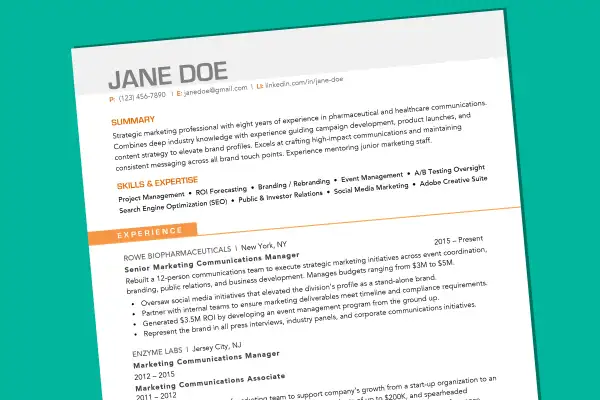
1. Choose a smart format and font
Let’s be blunt: The job market is brutal. Hiring is down, unemployment is up and wages have stalled, according to a recent report from the Labor Department. To stand out in this ever-crowded field, you may be tempted to jazz up your resume with creative elements like video intros, headshots or infographics.
This isn’t a bad strategy if you’re, say, a graphic designer. But for most job seekers, a traditional layout (reverse chronological order; left-aligned) with a clean, no-frills format is still the way to go. This is especially true if you’re applying through a company’s online hiring portal or through a job posting site like Indeed. These sites sift through massive volumes of resumes using Applicant Tracking Systems (ATS), which ignore photos and graphics at best, or, at worst, automatically reject applicants who use them.
Be sure to use the same font style throughout, says Dana Leavy-Detrick, founder of Brooklyn Resume Studio , but play with different weights and sizes to draw a recruiter’s eye to key parts of your resume. Sans serif fonts usually work best — Franklin Gothic, Calibri, and Avenir (the last of which we used for the downloadable template) are three of Leavy-Detrick’s favorites.
2. Add a pop of color
If you’re applying for an investment banking job, a hot-pink resume probably won’t do you any favors. But subtle pops of color, like the orange used here, will work for just about everyone. “It’s very minimal, and gives a bit of a design element,” Leavy-Detrick says.
However, if you do use color, “Stick to one color,” she warns, and “use it sparingly.”
A note on length: If you’re not applying for an executive position, keep your resume to one page. This is a highlight reel, not an autobiography, so showcase your most impressive accomplishments and leave out the rest.
3. Highlight the right skills
Lead with the good stuff. The top of your resume should include "critical keywords and a quick snapshot of your core strengths,” Leavy-Detrick says.
Hard skills, or tangible attributes that can easily be measured, take precedence here. If you’re in a tech-driven field, software and programming expertise is what employers want to see on your resume. If you’re in sales, marketing or a creative industry, showcase your experience with data and analytics software like Excel, Salesforce and Oracle or project management tools like Asana, Trello and Jira.
4. Quantify your impact
To craft a compelling case, zero in on proven results. Statistics that build upon your skills section are most impactful — bonus points if they show a track record of growth, revenue and profitability, Leavy-Detrick says.
If you’re drawing a blank, she suggests nodding to things that could help solve a “problem area” for the company you’re applying to, like improving customer retention, internal processes or even company culture.
“Impact doesn’t always have to be measured by metrics,” she says.
5. Cut irrelevant information
Be discerning with the content — don’t list salary requirements, or tick off every job you’ve ever had. The same goes for social media profiles. Unless your Instagram and TikTok feeds are relevant to the job you’re applying for, it’s probably best to leave those off.
“The resume is a high-level snapshot of your skills, experience, and accomplishments,” Leavy-Detrick says. If a hiring manager has to scan through an excessively detailed one, “they’re more likely to miss key responsibilities.”
6. Make your resume AI friendly
Don’t make the mistake of answering each job posting with the same generic resume. Instead, take a few extra minutes to mirror it to the keywords and phrases within the job ad. You’ll be much more likely to make it to the next round of hiring if the company is using artificial intelligence or a computer-generated tracking system to weed out candidates.
“Get as close as you can to the language of the job description, or at least look for common denominators,” Leavy-Detrick advises.
If you’re planning to cast a wide net by uploading a general resume to your LinkedIn or Indeed profile, make sure it’s tailored to the primary job you want — then update your keywords when applying to positions that deviate from the norm.
7. Know what recruiters are looking for
Workers need to be flexible these days, and so do their resumes. It’s nearly impossible to avoid change — whether it be updates to technology, staffing or workflow. Now more than ever, proving your ability to adapt is the key to finding (and keeping) a job.
This is especially true for older job seekers, who “aren’t perceived to be as versatile as their younger counterparts when it comes to technology,” Leavy-Detrick says.
If you fall into that category, she says, be sure to emphasize the digital skills you have experience in, like email marketing, social media or cybersecurity.
8. Strike the perfect balance
Omitting information can make recruiters suspicious, especially if there are large gaps in your employment history. So make sure your resume doesn’t have too much white space, or gaps in time, without providing a bit of context. If you worked outside of your current industry while between jobs, for instance, nod to that in a brief “additional experience” section.
Still, refrain from including every little detail about your personal life — if you took some time off to raise a family, or self-publish a novel, you’re probably better off leaving that for the cover letter.
More from Money:
- Quick Facts
- Sights & Attractions
- Tsarskoe Selo
- Oranienbaum
- Foreign St. Petersburg
- Restaurants & Bars
- Accommodation Guide
- St. Petersburg Hotels
- Serviced Apartments
- Bed and Breakfasts
- Private & Group Transfers
- Airport Transfers
- Concierge Service
- Russian Visa Guide
- Request Visa Support
- Walking Tours
- River Entertainment
- Public Transportation
- Travel Cards
- Essential Shopping Selection
- Business Directory
- Photo Gallery
- Video Gallery
- 360° Panoramas
- Moscow Hotels
- Moscow.Info
- Famous Buildings
Administrative and Government Buildings
In Russia, the use of architecture as a statement of power came to its peak in the reign of Josef Stalin, but that era's preference for severe classical forms and monumental statuary has antecedents in Russia going back well into the 18th century.
Although the city was relatively neglected during the Soviet period, as the capital of the vast Russian Empire, St. Petersburg required more than its share of governmental and administrative buildings, and many of them are masterpieces of neoclassicism and Empire style.
We can help you make the right choice from hundreds of St. Petersburg hotels and hostels.
Live like a local in self-catering apartments at convenient locations in St. Petersburg.
Comprehensive solutions for those who relocate to St. Petersburg to live, work or study.
Maximize your time in St. Petersburg with tours expertly tailored to your interests.
Get around in comfort with a chauffeured car or van to suit your budget and requirements.
Book a comfortable, well-maintained bus or a van with professional driver for your group.
Navigate St. Petersburg’s dining scene and find restaurants to remember.
Need tickets for the Mariinsky, the Hermitage, a football game or any event? We can help.
Get our help and advice choosing services and options to plan a prefect train journey.
Let our meeting and events experts help you organize a superb event in St. Petersburg.
We can find you a suitable interpreter for your negotiations, research or other needs.
Get translations for all purposes from recommended professional translators.
if (!inwiki && isMobileDevice){ document.write(' (adsbygoogle = window.adsbygoogle || []).push({}); ');} Shuvalovskiy park ( Saint Petersburg )
- Similar places
- Nearby places
- Nearby cities
- Adolf's alley 1.1 km
- Public garden 2.4 km
- Park 4 km
- «Osinovaya Roscha» ground fortress 4.5 km
- Osinovaya Roscha park 6.7 km
- Cemetery 16 km
- 2nd Pargolovo 0.9 km
- Torfyanoye 1.1 km
- Roundhouse (Depot) 6 Vyborgskoye of St Petersburg metro 1.5 km
- Parnas (historical area) 2.6 km
- Shuvalovo-Ozerki municipal district 3.2 km
- Pargolovo 3.3 km
- Shuvalovo (historical area) 3.3 km
- Shuvalovo-Ozerki 3.6 km
- Vyborgsky District 5.5 km
- Primorsky District 11 km
- 52 km
- 290 km
- 322 km
- 386 km
- 414 km
- 433 km
- 464 km
- 471 km
- 732 km
- 874 km
Post comment
or continue as guest

IMAGES
COMMENTS
Learn four strategies for showing multiple positions at one company on your resume, such as stacking similar titles or creating separate entries. See examples and templates for different scenarios and formats.
Need to learn how to create a resume for multiple positions at the same company? TopResume's guide has the tips you need to overcome this challenge.
Learn how to format and organize your resume when you have multiple roles at one employer. See examples, tips, and common mistakes to avoid.
How to make a resume with multiple positions from the same company? This knowledge can help you get the job you're after! Visit our guide and learn more!
Learn how to showcase your career progression and accomplishments when you have held multiple positions at the same company. See examples, tips and alternatives for different scenarios and situations.
To show multiple positions that you have held while at the same company, you can either stack your entries, split them, put them in the prior experience section, or put them in the reverse-chronological format.
Learn four ways to showcase your career progression and achievements in one organization on your resume. See adaptable examples and templates for different scenarios and tips to highlight your promotions.
If you have held multiple positions within the same company, it's best to list them under a single heading for that company, with the job titles and dates of employment listed below. This way, the employer can see your progression within the company and the different responsibilities you took on. It's also a good idea to include a brief summary ...
Did you get promoted or switch jobs at your company? Here's how to show off multiple roles on your resume in a way that's ATS friendly—plus examples.
Coming up through the ranks at a single company can be great for your career, but when it's time to move on, you might be stumped about how to list all the different positions you've held on your resume. How you list the jobs on your resume depends on whether you came up in one department or moved around within the company.
When creating a resume for multiple careers, choosing a format highlighting your transferable skills and accomplishments in each field is important. One option is to use a combination resume format, which allows you to group your achievements by skill rather than by job title. This format is handy if you've had multiple jobs within the same company or worked for different companies in ...
Crafting a resume is one of the keys to getting the job of your dream. However, unfortunately, not all people realize how a good resume should look like. What if you worked for one company for a long time without leaving it and got promoted within your department?
You need to be concise while showcasing multiple positions in your resume. You can use one-liner bullet points to add your work details at multiple positions. Then you can club similar points under the heading of your profile title to organize your resume elegantly.
Outstanding tips and examples on how to create a resume with multiple positions in same company and impress recruiters with your application. Be ready to land your dream job.
Here are two ways to show on your resume if you have held multiple jobs at one company. You may have held multiple positions in the same job family, and there is a way you can list these job titles and dates on your resume and combine the bullets describing your experience and highlights. Or, you may have held multiple unrelated jobs at the same company that you want to list separately.
Usually, a resume only separates jobs by job title and company. But when you want to list multiple jobs with the same employer, you can do it in two different ways:
There are two ways to list multiple jobs at one company on your resume are: the most common resume format, Bundling Method and Snippets Method. Bundling Method: In this method you begin by listing ...
Not sure if you should list more than one job title on your resume? Here are some career mentor insights on using multiple job titles in a resume headline + how to do it well.
Easy and Free Online Resume Builder. Create your resume in minutes with Indeed's free resume builder. Download it to your computer or use it to apply for any job on Indeed.
TopResume's career advice expert explains how to format your resume work history when you've worked in multiple locations for the same employer.
Here's how to write a resume for today's market, and a free template you can download and customize.
Tailored resumes for different job applications: The duplication feature facilitates the creation of multiple resume versions, each customized for specific job applications or industries.
Once a shipyard and then the headquarters of the Russian Navy, the Admiralty is one of the oldest and the most impressive buildings in St. Petersburg, with its magnificent neoclassical decorations and renowned gilded spire. Symbolic of the power of Russia's Imperial Government, this magnificent neoclassical building opposite the Winter Palace ...
Shuvalov park in Shuvalov's Estate, between the village Pargolovo and the river Zamanilovkoy, a monument of landscape architecture of the XIX century. Created in the 1750s on the estate of Count Shuvalov. Redesigned in 1820 by a garden master P. Erler. Shuvalov park in Shuvalov's Estate is one of the cultural sites of the UNESCO World Heritage since 1990 - number 540-023 .
Heliport information about LL62 - N'yusar [N'yusar Heliport], SPE, RU
Below is the select list of some major cities from Sankt-Peterburg, Russia. Click on the "Show Postal Code" button to go get its postal code. Note that many cities from Sankt-Peterburg, Russia may have multiple localities in it, so the clicking on "Show Postal Code" below may only show postal code of central locality. For specific locality/address, you need to select its name in the above text ...